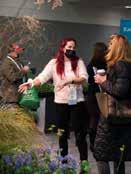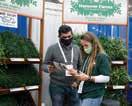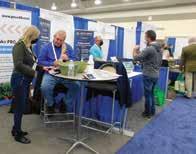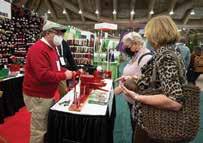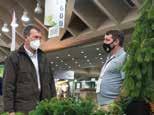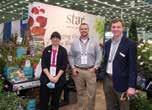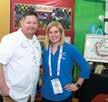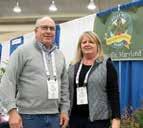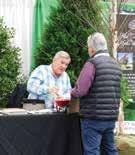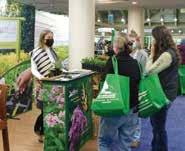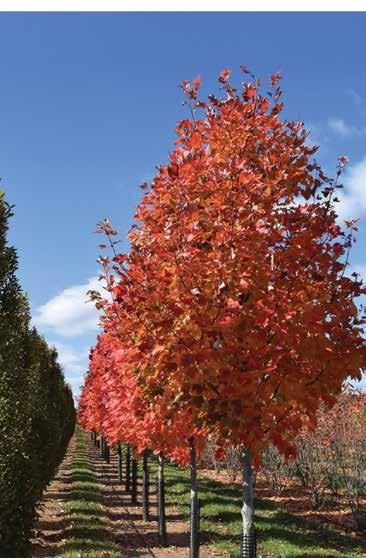




















When I finished shipping the 2022 seasonal plants, I thanked my lucky stars that our industry has been so resilient during the past couple of years. The challenges I overcame were new challenges that my mentors from years past could not prepare me for. These new challenges opened the door for new opportunities. Without these new challenges these new opportunities would not have developed. A challenge should be welcome as it is the door to success.
The General Assembly is ramping up for a new season. Watch for the bulletins from the MNLGA to update you on the new bills that matter to you. Remember, even one small comment from a member could be a giant leap for the good of our industry.
JOHN MURPHYMurphy John's, Inc.
Many thanks to our members for their donations and volunteering to complete an outstanding job this past summer on the Timonium Fair ground entrances. This service project was a great success that could not have happened without the generous donations from our members and the hard work by our volunteers. These plantings will be enjoyed by thousands of fair goers for many years to come.
Until the next time…. keep your shovels in the ground and the wheelbarrows rolling. A John Murphy
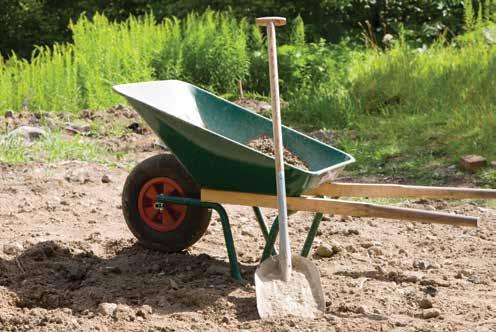
Murphy John’s Inc. President MNLGA
Maryland Agricultural Commission (MAC) Nursery 2 State Soil Conservation Committee Representative for MAC Maryland Green Industry Council Board Member





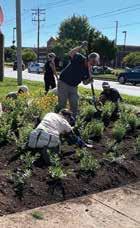

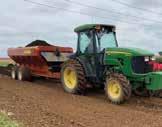

From my winter 2021 Executive Director’s message I said, “We’ve waited two years… are you ready? It’s time to get back to MANTS in-person, face-to-face. I am thrilled we are able to once again gather as an industry to promote our businesses, sell our products and services, and reconnect with our industry family and friends once again.”
Little did we know that December 13, 2021 would do it’s best to turn the world upside down. And it almost did, but thanks to the stalwarts and the brave, MANTS 2022 did happen and here we are once again, preparing for the 53rd year of gathering the industry together to continue doing business as business should be done; live, in-person, and face-to-face!
If people in general had the ability to look at our industry from the outside-in or from 10,000 feet (choose any analogy you want), I believe the vast majority would look in awe to see an industry that shows the kind of resilience that ours does; regardless of the circumstances that life throws our way. Day in, day out … week in, week out … month in, month out … year in, year out … this industry perseveres through it all. Whether it be economic, legislative, labor, recession, inflation, pandemic, bugs, blight, and/or climate, this industry takes a punch and continuously plays the role of Rocky Balboa time and again. We might fall from time to time, but we get back up and press on.
For our part, the MNLGA is very proud to play the role in helping our members to get from point A to B to C whether it be through education, working legislatively, providing certification and recertification opportunities, working with AmericanHort and other national organizations on advocacy issues, or serving the membership through public relations, marketing, sponsorship and/or facilitating communications, we are here to serve. That’s why we say Membership Matters!
We will touch on all those topics and more when we gather at the MNGLA annual meeting on the opening day of MANTS, Wednesday January 10th, 2023, at the Baltimore Convention Center. Our many Wye Oak and Black Eyed Susan Sponsors (see page 43) are providing a complimentary hot breakfast while we all catch up on MNLGA business. Registration is available on mnlga.org and through the myriad of e-mails you have received since early November.
AGAIN, attendance is complimentary, but we need your reservation to properly plan for breakfast and seating. The meeting will run from 7:15 – 8:30 am and you’ll be out and ready for business by the time MANTS’ opens the doors at 9 am.
This past year, the MNGLA continues to build on years past by quietly addressing many challenges. Along with our peer MaGIC industry associations, we followed and responded to dozens of bills, received feedback, and input from our members, and kept all of you informed of bills’ progress through the Assembly. We had many members testify but we always need more. Please, when called upon, take the time to step up, be heard, represent your peers, challenge those things that need challenging and fight for those that need fighting. A half dozen members testifying over and over is not enough. Don’t be a quiet complainer, be a voice for what you know to be right.

Firm Page
Affinity Program – MNLGA 61
American Landscape Institute 59




Angelica Nurseries, Inc.

Babikow Greenhouses
Outside Back Cover
Inside Front Cover
Bloom 12
Cam Too Camelia 31
Cavano's Perennials 7

Chesapeake Green 31
CPH – Certification Matters 70


Fairview Evergreen Nursery 18 Farm Credit 30
Foxborough Nursery
Inside Back Cover Gowan 23
Greenhouse Field Day 42 Greenstreet Growers 42 Gregory J. Cannizzaro Graphic Design 62 Manor View Farm 62

MANTS 74
MD Ag Ed Foundation 72
MNLGA.org 54 Office Depot 54

OHP 3
Pender Nursery 42

Perennial Farm 22 Service First 53
The HC Companies 17
The Soulful Gardener 23
Wye Oak Sponsors 43

If I was going to title this article, I’d call it Transitions. They have been on my mind lately. My own and others, planned and unplanned. Planned is best of course, unplanned can be rooted in tragedy. Or it can be just old age creeping up on people who are not thinking ahead.

My own here is going quite well. I would say I’m quite happy with its progress. I have no doubts that I could retire tomorrow and my son and grandson, Larry and Robert, could handle our nursery. Part of this stems from our day-to-day operations proceeding normally. The part which makes me happiest is listening to their ideas for the future. They are both looking forward at possibilities of using technology and other progress. Solar power, computers, material handling and RDF figure high in the future they see. After some thought, I realized a few months ago that I needed to step back and let them move forward and fly, if you will. After all, I’ll be 79 by the time you read this. I still hope to be around making cuttings, pruning, even pulling a few weeds for a while
longer, though. In truth, I am having a ball and very happy at the way things are going here.
We have all seen generational changes in nurseries, but my thoughts have been caused by two examples going on close by on the peninsula. One is a generation change from father to daughter at Forest View Nursery in Delaware. A few years ago, I noticed that its operations were well, getting old. By that I mean they had less stock. What they grew was still quality and reasonably priced. It didn’t worry me. But I did notice and thought it was like what our nursery was doing before I shocked everyone and returned from the Navy. My father, thinking I was a career submarine sailor, was letting the nursery wind down to his retirement. Doing a transition in a declining business that way does create its own concerns and problems. Added to the change in leadership was the fact that I had decided to change to a container growing operation. My father concurred with this change. Unfortunately, he passed on before it was completed. It
(continued on next page)
worked out okay in the end, but it was less fun at times.

Susan, John’s daughter is now working with Terry and are making changes and doing things. I had already seen more field planting than before, and more container area brought in to production. Last week, when I was there, Terry was showing me their used poly houses they had bought and installed. He was excited. He firmly said the houses would be used only for winter potting of liners and stepping up container material. As I have long
been a proponent of winter potting, I was both impressed and glad. They may hit some rough spots, but I am sure they have a good future ahead.

Another transition that is occurring is at Brusca Nursery near Sudlersville, MD. This sadly is occurring from a tragedy. Richard Brusca was killed in an accident leaving his daughter Lisa to take over completely. She was already involved in the day-to-day operation both in the office and the sales yard. It’s possible for a man or woman to run a nursery the size of that by themselves. But it could be a really stressful, too. She also got help for the field and container end of the business. Lisa had envisioned some of the changes being made there in the container portion and sales area of the operation in advance of Richard’s death. She said to me, “It was time to make some changes, you always need to look ahead.” What changes she has made have been practical and well thought out. In conclusion, if you have younger family members in your operation, is it ever too early to start the process toward

their eventual take over? It’s one thing to teach them the ins and outs of everyday work but another to bring them in on the big and hard decisions. That includes listening to new ideas and encouraging trials of those ideas. I’ll tell you it gives me a sense of joy and pride to see it happening with us.
In August, Flo and I took a cruise that was supposed to stop in three ports in Greenland. Bad weather kept us from making one port, which unfortunately was the capital city Nuuk. I can tell you now, I have never seen a place before so rift of possibilities for anything in our line of work. In the two ports we did stop in landscaping was just not done in any form. I saw only one house in Nanortalik that had anything that could be called that. It had three shrubs, two inside the fence the other outside, neither one identifiable from the distance I was from it. Also inside the fence was the stump of a very dead tree. It was a couple feet taller than the fence with a possible four-inch caliper trunk. No lawns, urns or pots with annuals or anything else of a horticultural bent at any house we saw. Natural plants except grasses were all short and sparse among the rocks. Some areas of threefoot grasses were along the shore. It was pretty in its own way, including ice floating in the harbor.

The cruise had first stopped in Halifax, and we decided to go to the Halifax Public Gardens. It was beautiful, and probably the best public garden Flo and I have ever seen. The irony of it all, we saw our first mature healthy American Chestnut, in Canada.
Castanea dentata is a very impressive tree when seen for the first time. This alone made the excursion to the garden worth the trip.

Above right: American Chesthut Below:Greenland Landscaping
the month before our arrival. That was when someone girdled 32 trees with an axe causing four to be removed. The trees were from 50 to 200 years old. They are trying to save the remaining trees by replacing the bark where possible and bridge grafting. How can people do such ugly things to places of beauty?
Speaking of American Chestnuts or actually Dunston hybrids, I was given some seedlings. The waitress at a local restaurant gave them to me. She had bought the parent tree 15 years ago and it produced nuts which she germinated and grew on. She no longer had room to plant out more and gave me 20 plants. They were in 3-inch pots 12 to 15 inches tall. I brought them home and repotted them into 3-gallon containers. After all these years we will have some American Chestnut hybrids along with our Chinese seedlings. A
Halifax Public Gardens are one of the finest surviving examples of a Victorian garden in North America. They were founded by the Nova Scotia Horticultural Society in 1836 and were recognized as a National Historic Site in 1984. The Halifax Public Gardens is also part of Canada’s Garden route.
Flo and I walked all the paths enjoying all the beauty and care put into this wonderful gardens. Sadly, though the beauty was marred by senseless vandalism in July,
Mike Hemming
Get Active. Stay Involved.

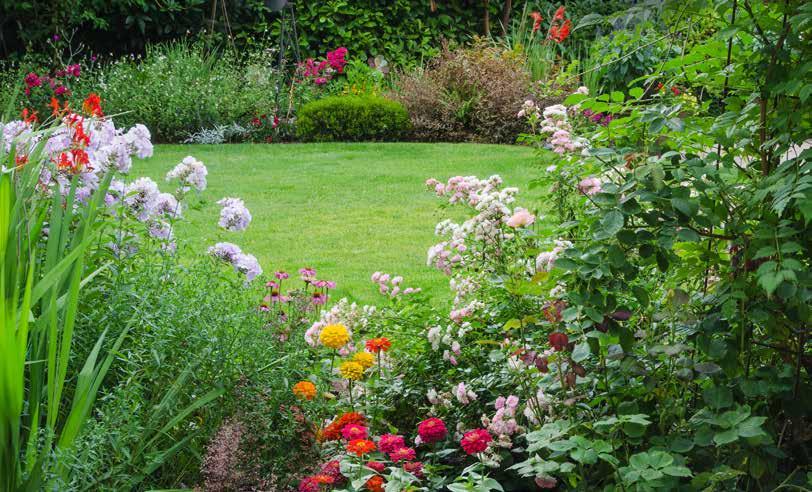

In Part I of the drone series, we demonstrated to growers how drones are being used in greenhouse crops and in outdoor growing areas, such as for container-grown chrysanthemums. In part two, we looked at using drones to apply low risk materials in a working nursery setting to control bagworms (Thyridopteryx ephemeraeformis Haworth (Insecta: Lepidoptera: Psychidae). In this trial, we used a spray drone at a wholesale nursery in central Maryland on field production of evergreen Thuja ‘Green Giants’ hybrid trees that were 2 meters tall.

Situation: Thyridopteryx ephemeraeformis (also called the evergreen bagworm, eastern bagworm, common bagworm, common basket worm, or North American bagworm) can feed on over 50 families of deciduous and evergreen trees and shrubs (Rhainds et al. 2009). Severe infestations can damage the aesthetics and health of host plants, especially juniper (Juniperus) and arborvitae (Thuja). Thuja ‘Green Giant’ is extremely popular among landscaper installers and the nursery industry has responded by planting large blocks of Thuja ‘Green Giant’ to meet this market demand.
Photos:
Top right: Bagged trees July 20, 2021
Bottom right:Count taking July 20, 2021
(continued on next page)
Kirk 'Floyd of KDrone company preparing a DJI spray drone for the bagworm trials.
The wide host range, high female fecundity, and method of dispersal by wind, make bagworm a major problem in nurseries and in landscape settings. Damage to foliage can be extensive. Less than 10% damage on woody plants is tolerated by consumers (Lemke et al. 2005). During the summer months, as few as four bagworm larvae can cause a four-foot arborvitae to be unmarketable for sale (Sadof and Raupp 1987).
Adult bagworms will often go unnoticed in the nursery and landscape, especially the female, because she is enclosed in her bag and inside of her pupal casing throughout her life. The adult female’s wings and appendages are greatly reduced to vestigial mouthparts and legs, small eyes, and no antennae or wings. The female remains in a caterpillar-like state, mates, and then the bag becomes essentially an egg-filled sac. The male bagworm emerges as a free-flying moth that is hairy and charcoal black. Neither the male nor the female adult feeds. The female lives a couple of weeks, while the male lives only one to two days (Rhainds et al. 2009). After mating, the female lays a large egg clutch (500-1,000 eggs) inside of her pupal case enclosed within her bag. The eggs are smooth and cylindrical in shape and laid in a mass that is covered in a waxy, tuft-like layer (Peterson 1969). Bagworm eggs will overwinter.
Hatching larvae are small (under 2 mm long) and often
Undergraduate students place bagworm cages on 'Green low-risk pesticides applied using a drone.
disperse to surrounding plants by spinning a silken thread and ‘ballooning’ on the wind. Once a suitable host is found, the caterpillar begins feeding and incorporating material into its bag, which it constructs with pieces of twigs, leaves, and silk (Peterson 1969). Only the head and the thorax emerge from the anterior end of the bag, so that the caterpillar can feed and move along plant material.

We applied reduced-risk products or biopesticides (See Table 1.0.) with a sprayer mounted on a drone (Model DJI Agras MG-1P). These insecticides were applied in two to three passes over rows of Thuja ‘Green Giant’. The rows were 120 feet long and four feet wide. Ten plants with two plants buffer between, were randomly selected in each row for pre and post counts. The trees were two meters (approx. six feet) tall, a meter and a third (approx. four feet) wide and planted on two-meter (approx. six feet) centers. Treatments were applied on 7 July 2021 and insecticide efficacy was evaluated as percent mortality on 20 July (13 days after treatment, DAT).
Bagworm neonates hatched from eggs collected in bags from last year’s untreated trees. These neonates fed on untreated arborvitae foliage, in plastic observation cages until they reached 2nd – 3rd instar. Treatments were applied using the drone with the attached sprayer and allowed to dry for an hour. Then student interns added the bagworms to a mesh bag placed over the treated branches, confining the bagworm larvae to a treated branch. One end of the mesh bag was cable tied closed

before bagworms and a treated branch was encased inside the bag. The other end of the bag was cable tied around the treated branch. The confined bagworms fed on the treated branches for 13 days before efficacy data were collected.

Branches with netted cable tied bags were cut off treated trees and taken back to our research lab for post counts. Netted bags were open cutting off the cable-ties and bagworms were placed in the middle of a circle drawn on a paper plate. Bagworms were given ten minutes to crawl beyond the line of the circle. Those bagworms crawling outside the circle were considered alive and those that did not were considered dead.
Discussion:
Having the drone go down the row and back again for double coverage gave fairly good control for treatments
of Conserve, and Confirm. Slightly better control was obtained with this same application method for Dipel and Mainspring.
When we increased the number of passes the drone made on a treatment row to 3 passes with the spray drone, the efficacy of Confirm and Conserve significantly increased, likely due to better coverage. We did not see a significant increase in efficacy with Dipel and Mainspring when comparing two spray passes to three spray passes with the drone.

All of the treatment gave significantly better control than the water treated plants. (See chart on page 16) Where
(continued on next page)
Get Active. Stay Involved.
used a fairly large drone to apply low risk materials to chrysanthemums grown outdoors. In 2022 we will look at using smaller drones, more suited for use inside a working greenhouse. We will report on these results in 2023. A
Literature cited:
• Gill SA, Raupp MJ. 1994. Using entomopathogenic nematodes and conventional and biorational pesticides for controlling bagworm. Journal of Arboriculture 20: 318-322.
• Lemke HD, Raupp MJ, Shrewsbury PM. 2005. Efficacy and costs associated with the manual removal of bagworms, Thyridopteryx ephemeraeformis, from leyland cypress. Journal of Environmental Horticulture 23:123-126.
• Leonhardt BA, Neal JW, Klun JA, Schwarz M, Plimmer JR. 1983. An unusual lepidopteran sex pheromone system in the bagworm moth. Science 219: 314-316.
• Peterson A. 1969. Bagworm photographs: eggs, larvae, pupae, and adults of Thyridopteryx ephemeraeformis (Psychidae: Lepidoptera). The Florida Entomologist 52: 61-72.
• Rhainds M, Fagan WF. 2010. Broad-scale latitudinal variation in female reproductive success contributes to the maintenance of a geographic range boundary in bagworms (Lepidoptera: Psychidae). PLoS One 5(11):e14166.
• Rhainds M, Davis DR, Price PW. 2009. Bionomics of bagworms (Lepidoptera: Psychidae). Annual Review of Entomology 54: 209-226.
• Rhainds M, Sadof CS. 2008. Elements of population dynamics (Lepidoptera: Psychidae) on hedge rows of white pine. Annals of the Entomological Society of America 101: 872-880.
• Sadof CS, Raupp MJ. 1987. Consumer attitudes toward the defoliation of American arborvitae, Thuja occidentalis, by bagworm, Thyridopteryx ephemeraeformis. Journal of Environmental Horticulture 5: 164-166.

Special thanks for assisting in this field trial goes to:
Brian Kunkel, Extension Specialist in IPM and Entomology, Univ. Delaware Extension
Suzanne Klick, LEAD Technician, University of Maryland Extension
Kirk Floyd, Drone Pilot, KDrone Services
Matthew Price, Student Intern, University of Maryland Extension
Mollie Wyatt, Student Intern, University of Delaware
Stanton Gill, Extension Specialist in IPM for Greenhouses and Nurseries, University of Maryland Extension And Professor, Montgomery College, Germantown Campus, Landscape Technology Program sgill@umd.edu https://go.umd.edu/ipmnet








When you hear the name Cavano’s Perennials, what comes to mind? Most folks would say perennial grower or cut flowers (if you are familiar with the company’s history).

However, several years back we discovered that over 40% of the plants we were selling were Mid-Atlantic or US native plants and their cultivars. Huh, maybe we are a native plant nursery, as well. That’s a substantial number which increases yearly.

The native plant movement, along with interest in plants overall, grew during the COVID pandemic. Customers were able to spend more time outdoors, on social media, reading articles, and listening to webinars – and there was a large amount of native plant content to be found. Butterflies and birds were colorful and entertaining, while the notions of low input gardening, stormwater management, and backyard habitats sealed the deal.
When trying to capitalize on this “growing” market (and yes, the pun WAS intended), start with the plants that already sell well for you. Trying to maintain an inventory of every native plant to the Mid-Atlantic is not only challenging for your staff, but overwhelming for the customer.
In our case, sun loving plants like Echinacea, Rudbeckia, Aster, and ornamental grasses were already top sellers as well as reliable garden plants. So, let’s take Echinacea as an example.

1. Start with the straight species – Echinacea purpurea. This plant should always be in stock, and your quantities throughout the season should demonstrate to your customer that you are committed. When you have your native plant event, consider stocking 50+ Echinacea purpurea (depending on your footprint) – fill an endcap!
2. Next, select 3-4 cultivars and carry substantial numbers of these as well. Make your selections based on current research, availability, and color variation. Some of my favorites are Echinacea ‘Sensation Pink’, E. ‘Glowing Dream’, E. ‘Fragrant Angel’, and E. ‘Julia’. Each of these cultivars rated well in recent trials, are documented to still attract pollinators (yes, cultivars can still be beneficial to pollinators), and provide an assortment of color. This group of plants would also warrant end cap placement as a group – allowing the customer to not be too overwhelmed with the selection.
3. Last, carry an assortment of other Echinacea at varying price points in smaller quantities, as your budget and space allow. This is where your die-hard, master gardeners and garden club members will go to buy a few new additions to their garden – just to try. You might want to include seed grown varieties like
These ideas can be used across many other genera of perennials, as well. Seasonally you could do a push like this with Rudbeckia, Aster, and ornamental grasses. As well as a similar push for shade loving native plants like ferns, Heuchera, and Tiarella
As we “grow” these native plant gardeners, we must remember that many are new to any type of gardening. We want to support them in their new endeavor and provide plants that are easy to grow and garden worthy. We do not want them to fail (we want them back to buy more); and when frustration sets in, we should be available to ease their concerns. Possible ideas for support include:
• Instruction on how to use a plant ID app (tags always get lost and even experienced gardeners forget plant names)
• Host a native plant expert session that might be available at a set time each week for customers to come in and ask questions. This could be someone on your staff, a partnership with a local gardening group, or even a professional presentation. I know when I
speak to homeowners about native plants, I am always bombarded with a myriad of questions at the end of the talk.
• Partner with a local institution and/or participate in pollinator trials of native species and their cultivars (especially new releases). Encourage your customer base to engage and become citizen scientists.
• Create a resource page on your website, with content for the beginner and advanced native plant gardener. So, where do native spring ephemerals and other unusual/hard to find native plants fit in? Look at these plants as a group, rather than individually. Perhaps you hold a spring ephemeral event in April. These plants can be difficult to source, so consider a partnership with a specialty native plant nursery. Allow them to bring their plants, set up a pop-up store, and sell - it’s win-win. You aren’t responsible for maintaining this stock when it goes dormant and becomes unsaleable, and you look good by promoting a small niche nursery. A Plants mentioned in this article
• Echinacea purpurea
• Echinacea purpurea ‘Fragrant Angel’ PP16,054 (PRAIRIE PILLARSTM Collection)
• Echinacea purpurea PowWow® White

• Echinacea purpurea ‘Ruby Star’

• Echinacea purpurea ‘Sensation Pink’ PP26,593
• Echinacea x ButterflyTM ‘Julia’ PP24,629
• Echinacea x ‘Glowing Dream’ PP24,329 (DREAMTM Series)
• Mt. Cuba Center Trials (https://mtcubacenter.org/ research/trial-garden/)
• Penn State University Bees, Bugs & Blooms Trial (https://ento.psu.edu/news/bees-bugs-blooms-2013-apollinator-trial)
Wendy Brister is the Marketing Director for Cavano’s Perennials, Inc. (Kingsville MD) and the former Conference Coordinator of the Native Plants in the Landscape Conference (Millersville, PA). You may reach Wendy at 410-592-8077 or wendy@cavanos.com

Photos: Page 19: Native planting. Eupatorium dubium and Rudbeckia sp. Page 20: Echinacea Julia Page 21 top: Echinacea Powwow White Page 21 bottom: Echinacea Glowing Dream
Get Active. Stay Involved. •
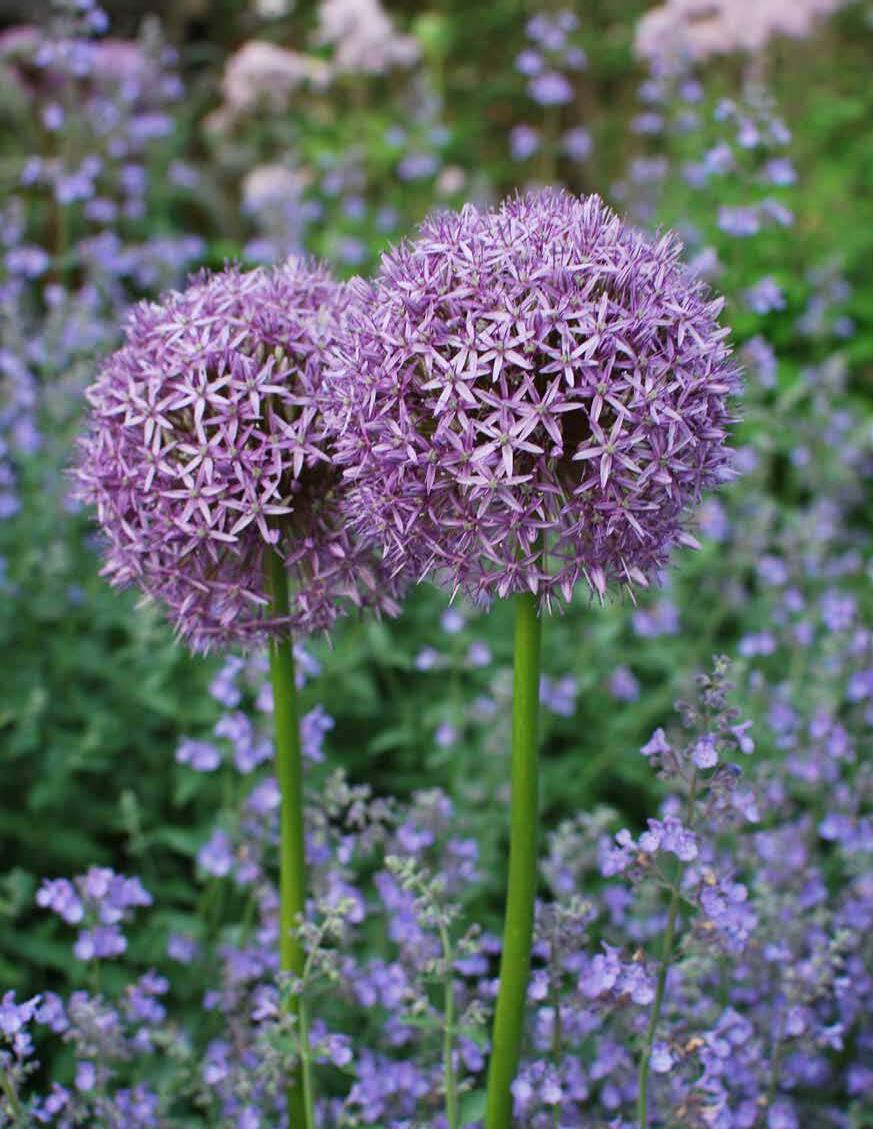



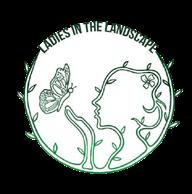

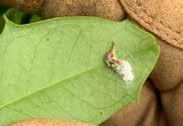





In the current day of being able to purchase just about anything over the internet, have you wondered how this translates to the nursery industry? We’ll look at a selection of wholesale nurseries offering online sales, to both wholesale and retail customers, as well as some retail operations that are offering online sales to retail customers. These operations offer insight as to whether the adoption of online sales resulted from the pandemic, and how sales have trended over the past few years. They’ll also help us to understand how the online offerings fill a niche for consumers and how the online sales fit within a company’s business model. These nurseries offer a unique perspective about how the inclusion/adoption of online sales has been beneficial and which aspects are viewed as the drawbacks. The nursery operations interviewed indicate that online sales of plant material can be a viable part of their businesses.
Raemelton Farm is a wholesale tree farm providing caliper size B&B trees in Frederick County. The operation is known for its quality plant material, including some organic offerings, as well as leading the way testing out sustainable practices. Owner Steve Black notes that Raemelton Farm’s online plant sales to the trade through Landscape Hub began about four years ago, while its direct retail online sales through Bower and Branch began about three years ago. With getting started just prior to the pandemic, Raemelton Farm saw many more retail inquiries for plant material, however this did not result in greater sales, as only online landscaper sales actually increased. The trees sold through Bower and Branch do fill a niche for retail consumers, providing a
way for them to purchase large trees without having to visit a garden center or have a landscaper provide installation. Both types of online sales fit well within Raemelton Farm’s business model, as working with existing operations means that the online front end, website, communications, and payments side of things have already been developed, and they don’t have to dedicate staff to these efforts. These systems allow staff to aggregate the retail orders, dig, and stage the plant material within groups for carrier pickup in order to be efficient. Working with these two entities provided a way to diversify customer type and also have the logistical challenges of providing large trees to retail customers addressed by those who already have a system in place, rather than having to be an expert or hire an expert to create the platform. As Steve mentions, these firms are still relatively new and doing a new thing, so sometimes availability can be a challenge, but they will continue to try to make online sales work. For the majority of growers, Steve notes that it’s likely best not to try to run the online sales on your own, but he says that “he is optimistic that the concept of working with an existing platform will become a robust sales channel for a wholesale grower.”
The Perennial Farm, a primarily wholesale perennial nursery located in the Baltimore area, but also offers in-person retail shopping on Saturdays. Products include an extensive collection of landscape-sized flowering perennials, grasses, ferns, groundcovers, vines, and shrubs. Tom Watson, the nursery’s Director of Marketing and E-Commerce, shares that The Perennial Farm Marketplace opened for online sales in 2013. Around five
years ago, after a careful study of market trends, Tom began building the Amazon.com side of online sales for his family’s nursery, and this went live in 2018. Early on, while online shopping was in its infancy, order volume was low and went mainly to serious gardeners. Once the pandemic hit and people were spending much more time at home, there was a big spike in sales, including more sales to rural areas. As times are returning to a more normal state, The Perennial Farm has continued to see solid sales volume, including customers from rural areas who do not have easy access to garden centers, which is a niche they will continue to fill. These online sales were not a part of the business plan five years ago, but now they definitely have a solid position adding value to the wholesale operations. Benefits to customers include the ability to buy quickly from anywhere, while benefits to the nursery include adding value to the growing infrastructure already in place. This has been a good opportunity to work on re-tooling product information and packaging inserts, in order to help educate people about what they have purchased and how to provide care.
Challenges include
packaging, which requires a lot of attention, as shipping through common carriers can result in some loss. Logistics related to shipping can also be a challenge, as Amazon does not carefully control the process of limiting shipping to appropriate states. Tom notes that there is quite a bit of work involved with the online sales, which should not be viewed as a replacement for wholesale sales, and interested nurseries will need to research carefully before pursuing. Overall, this has been an exciting trend for The Perennial Farm, which has been leading by early adoption and careful adaptation.
American Native Plants, a wholesale native plant nursery in the Baltimore area, offers online retail sales through its affiliate company Direct Native Plants. Plants offered include native trees, shrubs, vines, perennials, ferns, and grasses. Natalie Forte, Manager of Direct Native Plants,
(continued on next page)
explains that online horticultural sales was already an area identified for horticultural expansion, and Direct Native Plants made its start prior to the pandemic. Retail customers had been contacting the wholesale operation in search of native plant materials, and the online sales provided an opportunity to reach a larger audience. The first and second years of the pandemic were years of high growth, and while sales still continue to grow, the rate is less rapid than when the online sales were brand new. Direct Native Plants’ niche is to provide native plants to retail consumers, to be shipped from its nurseries in Maryland and Illinois. The online sales fit well within the company’s business model and has provided an opportunity to expand the customer base and have fun working out logistical challenges. Additionally, expansion to a second location has helped with shipping costs, delivery time, and overall reach. A drawback with the online sales is that gardeners are hands-on people, and without the opportunity to handle plants before purchasing, Direct Native Plants has compensated by providing excellent customer service. As Natalie noted, there are extra costs involved with selling online to retail customers vs. the wholesale portion of the business, however the company’s leadership believes in the value of providing native plants through this platform.
Red Columbine (Aquilegia canadensis) growing in the greenhouse at Direct Native Plants.

Adkins Arboretum staff organizing plant material for the Spring Plant Sale.
Www.gardenforwildlife.com was launched to expand the habitat reach of the Garden for Wildlife™ program, a 50-year-old program of the National Wildlife Federation. It is based in Reston, Virginia and provides online sales of native plants to retail customers in thirty-six states currently, distributed by its regional network of growers. Head of Garden for Wildlife™ Mary Phillips and her team ensure that these regionally-appropriate native plant collections are curated to provide new and seasoned gardeners easy access to quality native plant material, DIY garden designs, and to provide the opportunity to make the greatest positive impact on wildlife. Online sales, launched in 2021 after a multi-year planning process, empowers gardeners and maps their direct impact to wildlife. The business has seen 300% YOY growth. The niche filled by Garden for Wildlife™ is providing native plants with the highest value to wildlife that gardeners can easily purchase in collections native to where they live. With growers adhering to strict standards of sustainability and plant health care, customers know that they will receive quality plant material. Revenue generated by these plant sales is used to support the National Wildlife Federation in its mission of “uniting all Americans to ensure wildlife thrive in a rapidly changing world.” The ability to shop by state and zip code makes it easy for customers to directly get plants native to their ecoregion. The challenge has

been balancing consumer expectations for immediate shipping that they have become accustomed to in the last few years, as this is not always possible with live plant material. Growers involved in the network find great benefit to being fully supported in the sales, customer service, and shipping coordination aspects, providing them the flexibility to focus on their strength in growing quality native plant material.
Herring Run Nursery, a division of the Baltimore area non-profit Blue Water Baltimore, offers retail sales of plants native to the Chesapeake Bay watershed. This includes woody plants and various types of herbaceous perennials, both as straight species and cultivars. In addition to homeowners, the nursery serves schools, non-profit organizations, interfaith organizations, and landscapers. Nursery Manager Rob Jenkins explains that the nursery had been operating with in-person sales only, until the pandemic required a shift to online sales for the homeowner customers. It took about 1-1.5 months to establish the online store, so by late spring 2020, the nursery could continue to serve its customers. At first plants were distributed by delivery only, and then through drive-up pickups by the customers. Overall sales have increased since on-line purchasing was offered, however it online sales have tapered off somewhat this year as more people are choosing to shop at Herring Run Nursery in-person with masking and appointment requirements lifted. The nursery fills a niche for consumers by offering both online and in-person native plant shopping options that offer convenience of time and access for those with mobility issues. The nursery’s business model currently
Online orders staged for pickup at Adkins Arboretum.


BELOW Blueflag Iris (Iris versicolor) growing in the greenhouse at Direct Native Plants.

allows for the online sales platform to be open only when the nursery is not open for in-person shopping and vice-versa, to maintain an accurate inventory. Benefits to including the online ordering system were initially that it allowed plant sales to continue during a time of uncertainty and presently that many customers appreciate the option to have their order reserved for them. One drawback to the system at this location is that plant orders must be transported about 0.25 miles to a curbside pickup area, which can result in extra work if customers are late or do not arrive for their pickup time. Although much work up front, this has proven to be a good system to have in place and is one that Herring Run Nursery will continue to use. Adkins Arboretum, located on the Eastern Shore of Maryland in rural Caroline County, is a 400-acre native garden and preserve with a long history of native plant sales for its members and the general public. A large selection of woody and herbaceous plant species that are native to the coastal plain and piedmont regions of the Chesapeake Bay watershed, including both straight species and cultivars, is curated for the Arboretum’s yearly Spring and Fall Plant Sales. The organization’s Executive Director, Ginna Tiernan, provided the vision for adapting to online plant sales in order to continue serving the organization’s gardener constituents during the pandemic. Previously, plants could be pre-ordered prior to each sales event, with additional opportunity to browse in person. In spring of 2020, the sales model shifted to online sales only, with
carefully timed pickup appointments to allow for social distancing. Sales have been greater than years prior to the pandemic, likely due to the corresponding surge in gardening interest seen throughout the industry. Adkins fills a niche for gardeners by providing an extensive selection of native plant material that typically could not be found in one location. Sales of plant material support the Arboretum in its mission to “provide exceptional experiences in nature to promote environmental stewardship.” Now nearing the end of the third full season, the online sales have continued as the primary method of plant sales. It became clear that plant health could best be ensured by keeping the plants protected under shade and watered via irrigation at the nursery, rather than using the open-air area near the visitor center and parking lot that was dedicated to in-person shopping in the past. Customers are pleased with the quality of the plants, and although their in-person experience is limited to pick up, they also can attend programs or visit the Arboretum’s gardens and natural areas for planting inspiration. Staff answer questions about plant selection via e-mail and online educational materials about the plants have been and will continue to be expanded. Adkins understands the value of building a system that fits best with the nursery operation, in order to support staff and meet customers’ needs.
Each of the nursery operations offered as examples have shown that the concept of offering their plant material for sale online has merit. In some cases, online sales were

already in place, while others were setup in response to the pandemic and the need to adapt the sales method. Whether wholesale to wholesale, wholesale to retail, or retail to retail, there are many options to consider. Certainly, some variation of online sales is not the business model for all nursery operations, but with the right combination of innovation, technology, and dedicated staff time, the results can be positive. A




For over 100 years, we’ve been standing together with farmers like you by providing reliable financial services. We wouldn’t have it any other way. Give us a call to speak with a relationship manager today.
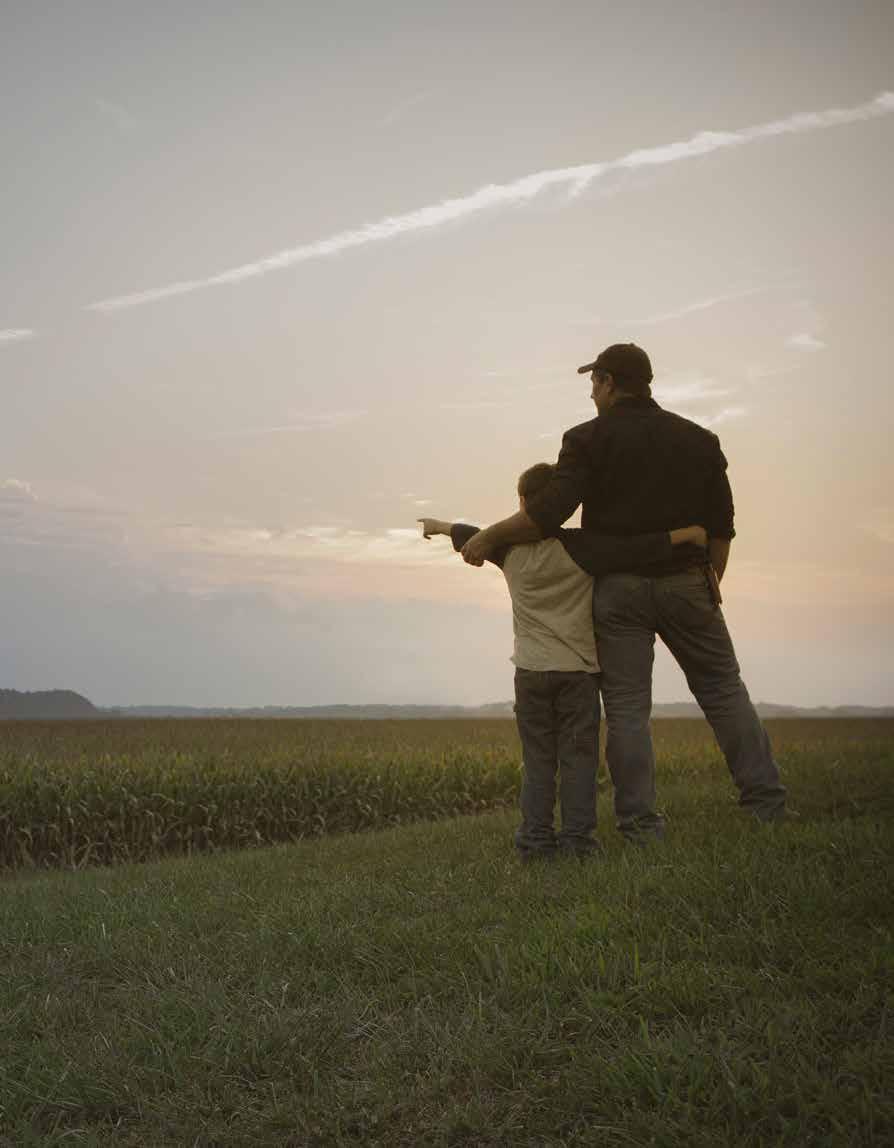



It’s not been easy finding much information specific to our industry workforce needs and challenges, so AmericanHort seized a rare opportunity to collaborate on a Nursery and Greenhouse Employment Survey with research partners at the University of California-Davis and Arizona State University. The survey reporting and responses clearly show that workforce and employment issues are top-of-mind for greenhouse and nursery growers nationwide. The purpose of the survey was to collect information about how growers are adapting to reduced agricultural workforce availability, usage of the H-2A program in the industry, and

the extent to which labor-saving technologies are helping mitigate problems stemming from labor shortages.
Of the 443 growers from 33 states and all regions of the United States participating in the survey, roughly two-thirds reported difficulty hiring the number of employees needed.
For every 100 workers growers needed in 2021 to produce at full capacity, they were only able to hire 82, triggering a wide array of coping strategies ranging from investing in mechanization to substituting crops that require less laborintensive treatment to cutting back production. Simply stated, with a nearly 20 percent workforce shortage on average, the green industry is struggling, underperforming, and finding every way possible to adapt.
Growers are doing everything possible to adapt to the ongoing workforce scarcity crisis. Nearly half of the surveyed growers
used new labor-saving technology in 2021. Of those who did, 50% reported investing at least $100,000 in laborsaving strategies. Interestingly, only half of the respondents indicated that technology reduced labor’s share of their total operating costs. Thus, despite making large capital investments in technology, only some growers found that it reduced workforce costs.
Then there is the increase in the use of the H-2A visa program. Thirty-five percent of the growers surveyed used the H-2A program in 2021.
Many grower respondents indicated concerns with barriers to entry. A good number of horticultural jobs are considered non-seasonal or yearround, and the H-2A visa program can only be used for jobs that are temporary or seasonal in nature.

The key takeaway from the survey - despite taking actions to help mitigate labor problems, many farmers continue to face workforce challenges. With continued upward pressure on the workforce and input costs and ongoing negotiations on a Senate version of the Farm Workforce Modernization Act, the results of this survey will help AmericanHort characterize workforce challenges and advocate for solutions to address workforce supply challenges while helping to ensure that the types of horticultural products that American consumers have become accustomed to continue to be produced domestically.
To receive a full copy of the survey report and to download an infographic summarizing survey results, go to AmericanHort.org/ EmploymentSurvey.
 Sara Neagu-Reed
Sara Neagu-Reed
Federal and state plant health officials have reported the detection of the boxwood tree moth, Cydalima perspectalis, in Clinton, MI in Lewanee County southwest of Detroit. Efforts are underway to gauge the extent of the infestation, as well as assess its cause (natural spread from Canada, or spread via infested plant material being the most likely possibilities). Meanwhile, AmericanHort and the Horticultural Research Institute continue efforts to fund and leverage research to develop and improve pest prevention and management tools, and dialogue with regulators and the Canadian nursery industry on regulatory strategies moving forward.
Craig RegelbruggePlants and managed landscapes enhance our environment as well as human health and well-being.
Growers and customers need a range of pest management tools for successful plant production and use. But government regulation at federal, state, and local levels increasingly pose a challenge to filling the toolbox.

AmericanHort this week joined more than 300 farm groups in calling on Congress to reaffirm federal preemption of state laws that create uncertainty around pesticide use and access. Under Federal law, the Environmental Protection Agency (EPA) makes decisions on how pesticides may be labeled and used. States, in general, regulate the sale and use of pesticides in concert with the EPA, but may not require additional or different pesticide labels. The principle of federal preemption over state pesticide labeling gives users clarity nationwide, avoiding a patchwork of state rules that contradict EPA’s scientific findings and, in turn, may disrupt commerce and access. A lack of certainty on EPA-approved, science-based nationwide labels is a concerning trend for growers and customers who count on access to a range of crop protection tools. In recent years, the preeminence of federal authority over pesticide regulation has been challenged by state laws, like California’s Proposition 65. For example, California categorizes glyphosate, the active ingredient in Roundup, as carcinogenic, despite EPA findings to the contrary.
Bayer AG, manufacturer of Roundup herbicide, earlier this year requested the U.S. Supreme Court review a lower court verdict in a landmark Roundup product liability case
arising out of California’s law. The Biden Administration through an amicus brief to the court reversed long-standing policy regarding federal preemption over pesticide labeling, adopting the position that federal law does not preclude states like California from imposing additional labeling requirements.
The letter this week follows an earlier call in May by AmericanHort and 54 agriculture associations for the Biden Administration to withdraw its brief and restore the traditional interpretation of strong federal authority over labels. As U.S. Supreme Court ultimately decided against reviewing the Bayer case, the remaining recourse for advocates is Congressional action clarifying the state and federal roles in pesticide regulation.
An opportunity for Congress to act may come soon enough. Pesticide registration fees are due for congressional renewal on September 30, 2023, with the expiration historically representing an opportunity to review and update federal pesticide rules more broadly. A
Evan Lee
Craig J. Regelbrugge Executive Vice President Advocacy, Research & Industry Relations
202-789-8111
Neagu-Read is Director of Advocacy and Government Relations at AmericanHort



The long-awaited nursery field day, hosted by Longwood Gardens, first scheduled for summer 2020, then moved to summer 2021, convened on September 7, 2022. And according to those in attendance, it was worth the wait. Speaking of attendance, unfortunately we had to cap the number of attendees and create a waitlist to keep the tours and educational stations manageable. We are used to having waitlists for MANTS but not for a field day.

The day began with a presentation of the history of Longwood Gardens which was hundreds of years in the making, becoming official in 1906 thanks to Pierre S. du Pont. If you wish to learn more about the history, there is longwoodgardens.org/history, but the best source, like so many things in life, is visiting in-person.
The remainder of the day was spent
in groups touring the Research and Production Greenhouse, taking a Conservatory Pest Walk, and being treated to a Land Stewardship and Ecology talk.

The Research and Conservation team focuses on finding and evaluating new plants, improving plant characteristics through breeding efforts and cultural techniques, and enhancing the sustainability of horticulture practices. To accomplish this, they are divided into four divisions: Conservation Horticulture & Collections, Land Stewardship and Ecology, Agriculture, Soils and Compost, and Floriculture Production. In the Production Greenhouses

Longwood grows 1,300 types of plants each year for seasonal displays in the Conservatory and outdoor gardens. The newest production greenhouse accommodates a variety of plant materials, growing methods, and environments and greatly increases their level of environmental control, automation, and overall sustainability. It features 17 distinct growing zones which allows them to attend to each plant type’s individual needs.
The Conservatory Pest Walk covered two primary areas. First was an immersive walk-through Longwood’s Conservatory spaces touching on various interiorscape pests including mealybugs, spider mites and thrips. This tour touched on Longwood’s comprehensive IPM philosophy which includes custom management plans for specific pests and incoming invasives, as well as cultural and biological control methods for (continued on next page)
landscape, conservatory, and greenhouse environments. Despite some afternoon rain, the second part of the walk was outside, and covered several topics including a discussion about outdoor pests and diseases including boxwood blight, hemlock wooly adelgid, and spotted lanternfly. The Land Stewardship and Ecology Talk provided an overview of how Longwood manages their different eco systems and varying landscapes. Over 700 of Longwood’s 1100 acre is comprised of natural lands. They have a “Soil to Sky Management Plan,” to help manage their varying landscapes using science-based principles, practices, and decisions and to help improve eco system resilience and improve biodiversity. This included a look at their invasive plant management strategies and stewardship of their natural ecosystems to help develop and maintain suitable habitats for wildlife.


We are most appreciative to Jonathan Waple, Rachel Schnaitman, and all those on the Longwood Staff, twelve in total, who helped us plan, organize and conduct this event. And what is an MNLGA event without the help and support from the University of Maryland Extension; we so appreciate

this continued partnership. And finally, thank you to all our annual Wye Oak sponsors, Angelica, Babikow, Bloom, Cavano’s, Farm Credit, The HC Companies, Jerry D., and The Perennial Farm as well as our annual Black-Eyed Susan sponsors, The Soulful Gardener and Gowan Turf and

Ornamental. Your continued support means so much to the successful implementation of our events and programs.
Visit mnlga.org to learn about upcoming events including the annual Breakfast, MANTS, and Chesapeake Green to mention a few. A





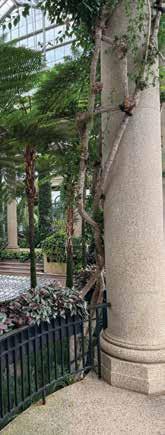


Brian Branthoover is owner and director of operations of a landscape construction company and retail garden center in Western Maryland. Halian & Associates Landscapes and Mosser Meadow Nurseries are in McHenry, just 2 miles from Deep Creek Lake where Branthoover spent weekends as a youngster.
His love of Deep Creek Lake is obvious. “It’s the largest freshwater lake in Maryland, covering 3,900 acres, with 65 miles of shoreline,”
he said. It was created nearly 100 years ago by a dam erected north of Oakland.
“There are eight state parks, three state forests and 90,000 acres of public land,” Branthoover continued. “According to the Chamber of Commerce, 1.4 million visitors come each year.” Deep Creek Lake also boasts the only winter ski resort in Maryland.
Halian & Associates Landscapes provides professional services to full-time residents and second
homeowners who were drawn to the area for enjoyment of the outdoors, Branthoover said. “We are honored to be associated with beautiful homes as well as resort properties, providing our landscape services and quality garden center materials. We do residential and commercial landscape design and installations from the foundation out.”
Branthoover said he and his team specialize in innovative, functional designs that require lower maintenance. Their design
packet includes scaled drawings, plant suggestions and their growth characteristics, accompanied by an itemized proposal noting a warranty on installations completed by Halian’s skilled staff.
“I’m the operations guy,” Branthoover said. In addition to design work and sales, he oversees hardscape installation and masonry, as well as softscape crews during projects. He and his installation staff hold multiple certifications from both national and international organizations for concrete paver stone installation, segmented wall construction and modular block wall construction.
His 12 employees also do landscape installation, landscape maintenance and snow removal. “Our landscape crews also build lakefront revetment walls in the winter, when the water level goes down, to prevent shoreline erosion,” he added.

He described his team members as “wonderful men and women with strong Christian values. They are conscientious and trustworthy; they have a strong work ethic; and they understand the importance of attention to detail during all phases of installation.”
He stressed that everything matters!
Branthoover has 40 years’ experience in the industry. Leaving his hometown in western Pennsylvania to pursue college degrees in Landscape Design and Construction, Floriculture Production and Nursery Management, he moved to the Deep Creek area to set up a landscaping business. He later sold that business to accept a position in management for a landscaping company in the northern Virginia area.
In February 2003, he and his family were in a horrific accident in Pennsylvania. A young driver ran a stop sign at 53 miles per hour and
plowed into their van. His wife, Julie; 3-year-old daughter, Hailee; and son, Ian, age 22 months, were killed. “They were laid to rest in the same casket,” he said.
Branthoover was seriously injured and spent several months in rehabilitation. Due to the emotional trauma he endured, he decided not to return to his management role with the landscaping company. He did some consulting and teaching, and in 2006 he started a new business named for his family. “HA is for Hailee, LI is for Julie, and AN is for Ian — Halian,” he said. He tacked on “and Associates,” thinking the company might be employee-owned at some point. He
moved the company to McHenry in 2008.
In May 2015, Branthoover opened a nursery retail center, Mosser Meadow Nurseries, next door to the landscaping company. A fullfledged garden center and nursery, Mosser Meadow offers trees, shrubs, perennials, annuals and related services such as planting, decorating and enhancement. “Our staff goes out to plant flowers in containers and landscapes and returns to maintain them,” Branthoover said. Staffed with five employees, the nursery is open year-round. Branthoover described it as “a
Get Active. Stay Involved.
boutique full of creative ideas and quality plant material.” He explained, “Our nursery does not grow plants, but rather relies on incredible vendors to supply us with some of the finest quality of trees, shrubs, perennials, and annual plants. We rely on fine associations such as MNLGA and networking opportunities to procure these relationships.”
Branthoover is an active member of five trade and nursery associations. He stays current with new developments in his field and encourages continuing education with his staff. With clients ranging from Western Maryland, Western Pennsylvania, West Virginia, Northern Virginia, Washington, D.C., and various points in between, Halian has achieved success by maintaining superior standards with creativity, expertise and exceptional workmanship.
“It’s a labor of love,” Branthoover said. “There’s a lot going on. We pride ourselves in being innovators in the green industry in this region. Our team members hold multiple certifications and we have won various awards recognizing our efforts.”
In May 2022, Branthoover was named “Top Rock Contractor of the Month,” nominated by Rosetta Hardscapes, one of his vendors.
In 2020, the nursery, managed by staff associate Charity Miller, was given a readers’ choice award for the “Greatest of Garrett County.”
Halian was a finalist for the Maryland Chamber’s 2016 Business Breakthrough Awards for the outstanding performance, growth, and innovation the company has achieved in the past few years.
The Garrett County Chamber of Commerce selected Branthoover for the 2015 Heise Entrepreneurial Spirit Award, a prestigious local honor.
Among the many challenges of nurseries and landscapers in Garrett County are deer. “The overwhelming deer population limits our creativity. We can’t flaunt what we want to do because the deer eat everything. The challenge has become an industrywide problem,” Branthoover said. “Our staff has a spray program for deer because they are such problem.”
As a result, Halian focuses on deerproof landscaping. A
PAGES 40 AND 41 TOP
Covered lakefront pavilion with paver stone walkway to the dock area.

Hilltop fire pit and patio to enjoy the view of Deep Creek Lake.
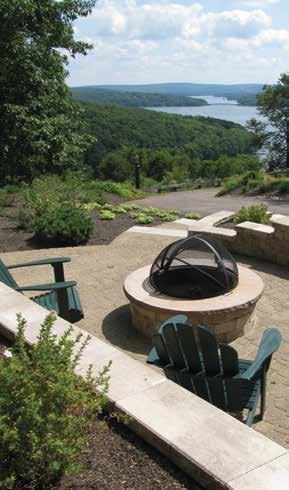
Backyard pool oasis, poolside fire pit and paver stone patio surround.
Stormwater management terrace on the lakefront using Rosetta Outcropping stone and Pachysandra border.
Mosser Meadows Nurseries Retail Manager
Charity Miller with 2020 Garrett County Reader's Choice Award
PAGES 41 CENTER AND BELOW
Mosser Meadows Nurseries Retail Staff Landscape Staff
Garage Crew Dispatch
For more information, call 301-387-3220, visit halianlandscapes.com or connect with Halian Landscapes & Mosser Meadow Nurseries on Facebook.



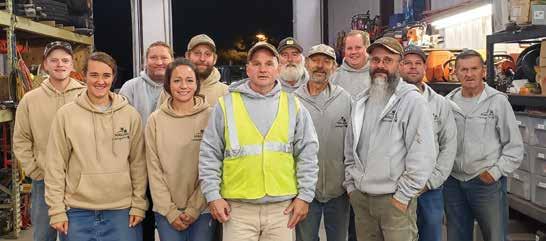
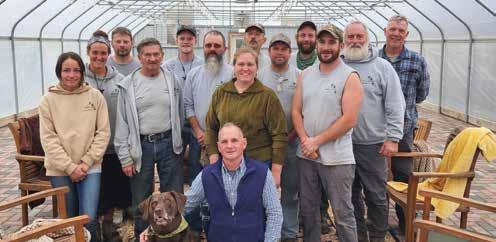





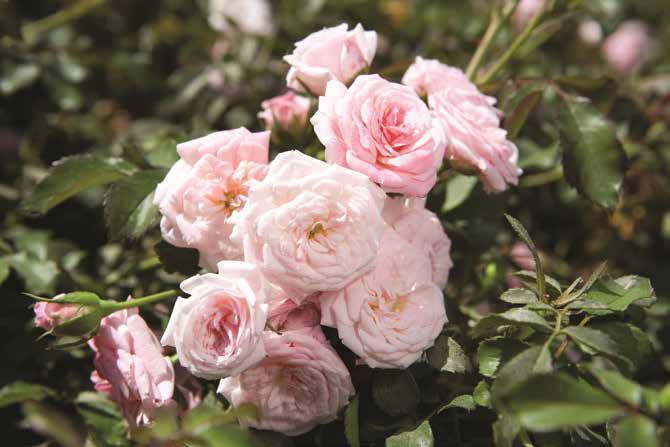



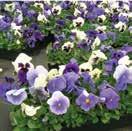

The MNLGA sponsorship Program is designed with your increased visibility in mind. It is a simple straightforward and reward driven program. The recognition opportunities coupled with an MNLGA Sponsorship are unparallelded for a state association. Sponsorship rates and benefits are avaiable on mnlga.org/sponsorship



is the hub of the membership experience. It is the arrival platform where every visit to the site begins. Your advertisement will be a focal point upon arrival.



is a magazine published in May, August and December whose content is provided primarily by members. Free State is printed and mailed to members and posted on the website at mnlga.org.

is an all-digital electronic flash bulletin providing timely and need-to-know information on a wide range of industry issues. “Root” is published at least 24 times annually and additionally as needed.
An English proverb dating back to the 1300’s says, “Many Hands Make Light Work” and this sure was right on August 18 when volunteers representing thirteen different MNLGA member companies came together to finish landscaping both the York and Timonium Road entrances before the Maryland State Fair opened on August 25.

I say “finish” because as the industry knows, the work started long before the plants arrived. The kudos belong to everyone who participated, but to those who went to turn and prepare the beds ahead of time and wound up digging through cement, clay, rock, glass, and iron with picks, shovels, pry bars and a backhoe, you all deserve an extra “very well done.”
Even though most of the volunteers work in all kinds of weather, it was hot, and shade was in short supply in the early hours and non-existent as late morning became afternoon. But the volunteer crews remained focused and undeterred throughout the day. The group was well organized into teams with one group finishing site prep, another placing plants, another digging holes and planting, and someone else recycling pots. Additional planting of shrubs along the York Road fence line, which has a sidewalk running between it and the beds, was also planted with shrubs. When one side was done, the mulching began, and this process continued until all four large triangle shaped beds were finished. As work on the York Road entrance wrapped, most of the crew moved down to Timonium Road while the water truck came in to provide the newly finished landscapes a much-needed drink.
The process repeated itself at the Timonium Road entrance well into late afternoon and the landscaping of both entrances was completed before the dinner bell
Spacing plants at the York Road Entrance

Greg Knighton of Designs with Nature hard at work
BELOW
Marion Mullan of the Mullan Nursery Company designed, laid out, and helped plant the Fair Ground entrance beds


Brent Cassell and his team from Leyland Landscaping prepping the entrance beds

Edie Bernier, State Fair Director of Publicity & Community Relations with George Mayo

rang. When the equipment was finally put away and the coolers packed up, there was that palpable sense of pride that only a volunteer project can provide. One of the landscapers said it best, “even when you do this day in and day out, you can just feel how much of a difference a project like this can make.” And I will add that it sure felt good!

And to all of you who wanted to participate or thought about participating, please know that we always have room for more hard working, dedicated volunteers, because while it is true that “Many Hands Make Light Work,” even more hands make for lighter work. Thanks to all who showed up and to those who couldn’t, we look forward to seeing you next time.
I am not going to name names for fear of leaving someone out, so we wish to thank and recognize the following companies for their participation in the volunteer service day (in no particular order):
Mullan Nursery Company
Murphy John’s
Leyland Landscape Contracting

Babikow Greenhouses
Kurt Bluemel
Manor View Farm
The Perennial Farm

Griffin Lawn Wrangler Design with Nature George Mayo Valley View Farms
Planted Earth







The numbers tell a story:
In the 60 years since the establishment of the Horticultural Research Institute, the foundation has endowed $9.5 million in research grants and scholarships, drawing on funds contributed by horticulture industry professionals. Of that remarkable figure, $3.6 million has been distributed to more than 100 research projects in the past 10 years. This year alone, HRI will provide $417,039 to support industry-specific research.
The generosity of donors, paired with the foundation’s strategic and savvy investment plans, has created a total endowment of nearly $20 million, and it’s a figure that continues to grow. Remarkably, there are more than 200 named funds established by industry professionals, their businesses, and organizations. In addition, 103 scholarships have been awarded since 2007.
At the most recent fund-raising gathering of HRI members in July 2022, a record $882,000 was pledged on the spot. Three new funds were established, and existing fund sponsors announced additional contributions to the coffers.
“HRI has experienced incredible industry support, especially over the last five years,” states Alan Jones, HRI President (Manor View Farms, Monkton, MD). “The major investments made in HRI by the industry indicates that the work HRI accomplishes is valued and, in turn, allows us to tackle even more.”
But the numbers tell only part of the story. The people involved, the research conducted, the programs established, and the students supported all have contributed to the success of HRI and, critically, to the ongoing success of the greater horticulture industry.
Sixty years ago, the Horticultural Research Institute was established on the premise that the most useful research—that which would provide practical, actionable solutions—should be determined by those professionals whose work is most directly affected: the horticulture professionals themselves. No one knows their day-to-day challenges better; no one understands their long-term goals more clearly.

From Day One, HRI has sought their input in order to drive the research that propels the industry toward growth and stability, vitality and sustainability. Industry professionals identify specific challenges and present their recommendations; HRI’s teams of industry volunteers then assess the industry relevance and scientific merit of grant proposals. Horticulture professionals also evaluate all scholarship applications.
Dan Batson, current HRI treasurer and president and CEO of Greenforest Nursery, Inc., in Perkinston, Mississippi, explains the concept:
“Those of us on the board, as well as HRI members and contributors, see this as a way for the industry itself to influence and maneuver the research that needs to be done through the universities,” he states. “We give them the ideas of what needs to be done in our industry: say, this is today’s problem, one that we need to have solved as soon as possible. The progressiveness of our industry is really dependent on people who can connect the research directly to our industry.”
Susie Usrey, vice president of customer relations for Monrovia, agrees. Susie and her husband, Bruce, long ago established research and scholarships funds, and Susie remains a staunch supporter. Research initiated by industry professionals and funded by HRI, she states, “is unique and very much needed, and handled very well. It has really made a huge difference in the industry.”
The critical influence of horticulture industry leaders identifying research needs cannot be overemphasized. “The advantage is in having industry leaders in the leadership of HRI, [who are] constantly assessing the marketplace for the most current issues that need to be studied and addressed,” asserts Dale Bachman, retired CEO of Bachman’s Inc. in Minnesota. “It’s the industry leaders who volunteer to guide the whole process of establishing the priorities, and going out and soliciting the funds, and ultimately making the decisions on what is to be funded.”
Again, who knows better how to ensure the long-term growth and strength of an industry than those whose livelihoods depend upon it?
The targeted studies that address immediate and long-term challenges, the outcomes of which directly assist horticulture industry professionals to solve problems and move forward, have run the gamut. They range from insect pest and disease prevention or control to mechanization solutions that support efficiency and precision.
“Without the experts working on some of the plant blights and insecticides and insect issues—and so forth—we probably would not have come as far as we have in the hort industry,” says Dennis Molitor, vice president of finance and accounting for Home Nursery in Albers, Illinois. “The other issue is mechanization; we’re seeing more and more automated work issues. I consider HRI to be a huge asset when it comes to any kind of research and development for our industry.”
One area of research that has contributed to long-term industry sustainability involved pollinator health. Public concern about pesticide use, and the potential harm such chemicals can wreak upon pollinator populations, once was a public relations nightmare. Research into alternative treatments, as well as which plants the industry grows that attract pollinators and encourage a healthy population, provided solutions that helped on both fronts. Relying on trusted scientific findings, growers could treat their ornamental crops with effective alternatives, as well as grow plants proven to be beneficial to pollinators and popular among the gardening public.
“The research we did in the benefits of plants and how that contributed to pollinator health really gave our retail community something they could sink their teeth into,” offers Harvey Cotten, Ad-Hoc Development Committee Chair for HRI. “They were able to use it in their marketing efforts to increase plant sales,” to the long-term benefit of the entire industry, he adds.
The act of growing a plant is an investment in—and a commitment to—the future. And the act of investing in the horticulture industry, through targeted research and support of hort scholars, ensures that the future is vital, strong, and able to support generations to come.
PRINT WITH PERMISSION: “Article provided by the Horticultural Research Institute. Author Sally Benson.”
About HRI: The Horticultural Research Institute (HRI), the research affiliate of AmericanHort, has provided over $9.5 million in funds since 1962 to research projects covering a broad range of production, environmental, and business issues important to the green industry. Over $20 million is committed to the endowment by individuals, corporations, and associations. For more information about HRI, its grant-funded research, scholarships, or programming, visit www.hriresearch.org or contact Jennifer Gray at 614.884.1155.

Columbus, OH • 2130 Stella Court • Columbus, OH 43215 • (614)487-1117
Washington, DC • 525 9th Street NW, Suite 800 • Washington, DC 20004 • (202)789-2900



January 11, 2023
Breakfast Meeting 7:15 – 8:45 a.m.
Location: Baltimore Convention Center Contact: MNLGA Office, 410-823-8684 office@mnlga.org mnlga.org
2023

Location: Tidal Creek Growers Contact: MNLGA Office, 410-823-8684 office@mnlga.org mnlga.org
January 23-27, 2023
CPH – Basic Exam
Location: Online Contact: MNLGA Office, 410-823-8684 office@mnlga.org mnlga.org
February 16-17, 2023
Chesapeake Green 2023
Location: Maritime Institute
Contact: MNLGA Office, 410-823-8684 office@mnlga.org mnlga.org
May 15-19, 2023
CPH – Basic Exam
Location: Online Contact: MNLGA Office, 410-823-8684 office@mnlga.org mnlga.org
May 15-19, 2023
CPH – Basic Exam
Location: Online Contact: MNLGA Office, 410-823-8684 office@mnlga.org mnlga.org
encourage you to reach out to your peer members – they may be a valuable business connection for you.
Quick Columbia AssociationColumbia, MD 21046
The education committee has continued to provide top notch in-person events throughout the year, and more are coming in 2023. Keep your eyes open for information on Chesapeake Green, Greenhouse Field Day, Nursery Field Day and any number of cooperative educational events with our friends and colleagues at the University of Maryland Extension. Thank you to all our venue hosts for opening their businesses to the membership. And much like members to step up and testify, our committees and events are always looking more input and companies to host events.
Be sure to keep an eye on the calendar at mnlga.org and for announcements in Root of the Matter and Free State. We know you see these announcements because you respond when you want too … now it’s time to respond for the good of your peers and because it’s the right thing to do for you and the industry.
In closing, I would like to thank our dedicated Free State writers who selflessly offer their time and expertise for every single issue produced, year after year. Join me in thanking Stanton, Jerry, Ginny, Leslie, Mike and new this year, Wendy Brister. We will always make room to the best of our ability for those who want to contribute to Free State and you don’t need to commit to every issue – if you’ve got a one-time feature or company news to share, please send it my way.
I look forward to seeing you at the MNGLA Annual Meeting and MANTS. Until then, I hope you have a very happy holiday season. A
Vanessa A. Finney Executive Director, MNLGAThe deadline for submissions for the summer issue of Free State News is April 1, 2023
We welcome your company news and updates or columns with your professional insight, commentary, opinion, press release, or an educational contribution
E-mail any submissions to Free State News at freestate@mnlga.org or mail to: Maryland Nursery, Landscape,and Greenhouse Association, P.O. Box 726, Brooklandville, MD 21022
Questions About Free State, please give us a call at 410-823-8684





Soil preparation is the starting point for any field production nursery. The soil you’ve got and what you do with it to maintain or improve soil health is directly tied to success as a grower. It is the key to growing consistently high value plant material.
In this article, we are going to look at how soil regeneration and tillage techniques can improve soil health and maximize the value of plants. There are hundreds of different soil types. That’s all been plotted through soil surveys by the USDA Natural Resources Conservation Service and posted online at the Web Soil Survey.
Soil types are made up of sand, silt, and clay. Sandy soil is a problem. It doesn’t hold moisture–which makes it difficult to develop a dense root system. Also, when the soil is too sandy, it is a real challenge to dig a root ball that won’t fall apart before it can be wrapped.
Heavy clay soil poses the opposite problem. Clay soils hold too much moisture for too long a time, and if they happen to dry out, they become hard like concrete.
Almost all growers have to deal with some version of soil that’s too much of this or not enough of that. At least some growers have a
favorable balance of sand, silt, and clay. Most plants prefer a silty loam. Here at Waverly Farm, we’ve got silty clay loam. That dash of clay in the mix tips our soil toward the heavier side of the scale. But in nursery production, a heavier soil is desirable because the root ball holds together a lot better when dug and later during transport.
If one has less than perfect soil, one of the significant issues may be the lack of organic matter. It can be modified through organic amendments or, if one has the
acreage, through fallow rotations with cover crops.
For example, some growers produce a high-volume cover crop that contributes up to a hundred tons per acre of organic matter. They mow it down and work it into the soil.


There is another way to develop healthy soil composition: Compost. Compost provides a tremendous source of organic matter to feed plants. It’s broken down by microbes in the soil and eventually becomes humus. Building soil volume and quality this way takes a long, long time and a single-minded commitment.
Compost versus humus. There is confusion over the relationship between compost and humus. Compost is the parent material of humus. As organic matter decomposes it mineralizes to produce nitrogen, phosphorus, and potassium as well as a wide
range of micronutrients which is variable dependent on the source material. The nutrients become available for plant uptake. When the organic matter is fully decomposed it is gone and must be replenished for the process to start over again. How long it takes to disappear is dependent on the variable mineralization rates. The residue of this process is humus. Humus is comprised of three major components: fulvic acid, humic acid and humin (the black residue of decomposition). Humus remains in the soil forever. Humus is the catalyst for topsoil production.
There is more magic in humic acids. Plant roots are negatively charged while nutrients are positively charged (cations). When roots absorb nutrients, they create a depletion zone in the vicinity of the root system. Humic acids then transport available nutrients from nearby soils to the root zone to replenish the zone of depletion.
In the absence of organic matter and humus, we find it necessary to artificially provide fertilizer. This could come from new organic matter, but we have been taught (I was taught in ag school) that it is much more efficient to deliver inexpensive synthetic fertilizer. This created the ‘dog chasing its tail’ scenario we are now living with for most of the agricultural soils of the world. We depleted what naturally occurring organic matter that may have existed, did not replace it, and are now obligated to make the situation worse by pouring on what has become very expensive synthetic fertilizer. This same circumstance
When we started growing at on average about 2.5% organic to nearly 3.5% percent in many started amending with organics
exists in our landscapes, lawns, nursery fields, and farms.
Background of why we use Organic Matter.
I was trained as an agronomist in the late 1960’s. I went to a good school and to my recollection the focus was not on organic matter mineralization. The focus was on increasing crop yield with synthetic fertilizers. Mineralization is now a topic that dominates my thinking in the nutrient supply system we implement here to produce ornamental trees and shrubs. We stopped using synthetic fertilizer in 2000. In 2005 we started the current program of amending
our soils with OM with several then unconfirmed expectations:
1. provide a natural alternative source of plant nutrition to prevent winter injury,
2. build soils to replace what is being sold with our plants – up to 5,000 tons per year, and

3. an expectation to reduce irrigation requirements to conserve water and save energy.
When we started growing at Waverly, the soils were on average about 2.5% organic matter. Now we’re up to nearly 3.5% percent in many areas. Keep in mind we started amending with organics only in 2004. 3.5% may seem like nothing compared to 7% and 8% organic matter topsoil that evolved over thousands of years in the Great Plains. But even a 1% gain makes a huge difference.
Characteristics of a Healthy Soil Foodweb per Gram of soil
• 600 million bacterial individuals
• 15,000 to 20,000 bacterial species
• 150 to 300 meters of fungal biomass
• 5,000 to 10,000 fungal species
• 10,000 protozoa
• 20–30 beneficial nematodes: bacterial-feeding, fungal-feeding, predatory
• 200,000 arthropods per square meter
Source: Dr. Ingham and Soil Foodweb, Inc.

The organic matter provides a sponge-like base, so water is more likely to infiltrate than to carry soil away. With normal rainfall, runoff will be limited.
It’s also a good practice to maintain grass strips between planting rows. It gives another layer of protection that prevents soil from being lost to erosion. The grass strip absorbs rainfall much better than a hard
Waverly, the soils were organic matter. Now we're up many areas. Keep in mind we organics only in 2004.Compost versus humus
surface or a bare surface. That’s why we have 50 acres of production land set aside for grass. There is an operational downside to 50 acres of grass. I estimate it costs us $1900 in labor equipment and fuel to mow the farm one time. Yet, if we prevent the loss of thousands of tons of soil, we work so hard to build and achieve the benefit of higher water infiltration, it’s a win.

For soil preparation we use a low RPM spade plow that goes down twenty inches. The first pass levels and fills holes left behind from harvesting and incorporates surface debris into the soil. Then we apply
the compost at 250 tons per acre each time we plant and give it one more pass with the spade plow to mix the mineral rich deep soil with the compost.
The low RPM machine gently cultivates the soil while maintaining the particle size. A desirable soil is made of particles, not just fine grains of sand, silt, and clay. This is called friability. Friable soils have a crumbly structure that promotes microbial activity and root growth.
It is characterized by large clumps that break easily and smaller aggregates that are harder to break. If we have that kind of soil structure, we don’t want to destroy it by breaking it down into fine

particles. The granulation is vital because it maintains airspace and oxygen in the soil which are essential for growth. Microbes will not be as effective in mineralizing the organics to nutrition if the soil profile is compacted and made up of fine soil particles. Mineralization is the conversion of organic mater into useful nutrients. Organic matter is quite variable in that the process can take one year for chicken manure and up to 10 years for horse manure.
Mineralization in soil science is when the chemical compounds in organic matter decompose or are oxidized into plant-accessible forms of nutrition. In other words, OM converts to plant food through the process of mineralization.
A grower must invest in ways to “manufacture” topsoil to replace the soil lost with each plant that is sold. The goal is to avoid a decline in soil health and quality over time. If we don’t do anything other than continue to plant and harvest, plant and harvest, all the rich soil is going to leave the nursery forever with the plants that are harvested and shipped to other locations.
I like to say the soil is not ‘lost’ it just finds a new home. A
Waverly Farm
1931 Greenfield Road Adamstown, MD 21710 310-874-8300
A grower must invest in ways to “manufacture” topsoil to replace the soil lost with each plant that is sold. The goal is to avoid a decline in soil health and quality over time.
The American Landscape Institute (ALI) and the Community College of Baltimore County (CCBC) have created a 2-year Horticulture scholarship program. ALI is a first-of-its-kind training and development program for the Horticulture and landscape industry. Sponsoring nursery, landscape, greenhouse, and public garden businesses employ participating students, providing crucial work experience. Students attend CCBC and pay just 20% of the tuition to ALI. Upon completion of the program 100% of the student’s contribution is returned to them. On the job training begins Spring/Summer 2022. Classes begin September 2022. Graduates earn a 2 Year Certificate in Landscape Installation, Maintenance, and Design from CCBC.
Please donate to help our program grow! The American Landscape Institute is a non-profit organization and donations are tax deductible. You can donate online, or mail checks to P.O. Box 52, Monkton, MD 21111. Visit the ALI website to learn more!


http://www.american landscapeinstitute.com



Congratulations to our newly-minted Certified Professional Horticulturists after passing the Basic Exam in Fall of 2022.
Jennifer Crumley
Kristine Devine
MNCPPC – PG County

Great American Landscapes, Inc.

Solomon Foster National Gallery of Art
Lisa Garmoe
Daniel Soresi
Dorothy Valakos
Patuxent Nursery
MNCPPC – PG County"

Demeter Design Sustainable Landscapes


The upcoming dates for the next Basic Exams are online during the timeframes of January 23-27, 2023, May 15-19, 2023 and October 15-19, 2023 CPH program and application information is available at mnlga.org

The MNLGA is constantly figuring out new ways to serve and benefit our membership. One of the ways that we do this is through our comprehensive Member Benefit Affinity Program. The following organizations below "have offered exclusive discounts and packages for MNLGA members. For many of these benefits, one order will “pay-back” your annual dues!
Office Depot
• Free next day shipping on orders of $50 or more
• 20% - 55% off core office supply items
• 5% - 10% off virtually all Office Depot Office Max Products
• Average 10% off 200 technology items
• Special pricing on print and copy: $.22 color; $.025 black and white; and 40% off finishing services
• And More!
PartnerShip
• Discount shipping program through AmericanHort partnership

• Small package shipping discounts; significant carrier discounts; reduced truckload shipping; and expedited/guaranteed/tradeshow shipping services
• No minimum volume requirements
•
TireBuyer.com •

Farm Bureau
Looking for even more discounts and savings programs?
•
For full program description, discounts offered, and access to program contact information, log into the MNLGA membership portal on the MNLGA website. Portal access is located on the upper right hand corner of all pages of the website. If you do not recall your access credentials, simply select the link, “Forgot Your Password,” and you will be given instructions on how to proceed.
































Part I ran in the summer issue of Free State.
Each state has the opportunity to claim a County, State and National Champion tree. Over the years, a County champion could grow to become a State or even a National Champion. Depending on the County, the list of trees is updated as some trees succumb to the sands of time and have to be removed, while others continue to grow and reach new heights and branch spread and become a listed Champion. This year the University of Maryland Arboretum has listed 16 county Champion trees on its campus and 4 are natives.
Aesculus pavia or the Red Buckeye is a deciduous large shrub or small tree in the Buckeye and Horsechestnut family. The Champion tree is located on the University of Maryland campus by the Benjamin Building. They are cold hardy from USDA zones 4-8 and thrive in full to part sun in moist, welldrained soils. They have large, dark green 5-7 leaflets in a palmately compound leaf. The leaves are arranged opposite of each other on olive brown stems. Light brown raised lenticels scatter like stars on the stems, and the triangular bud scars look like a shield with a distinctive ‘V’ arrangement of leaf traces. The leaves emerge early in the spring, even before the Maples and Oaks, and the silhouette of the crown is rounded but irregular. The brilliant red to orange-red tubular flowers are stacked on a 4-10 inch upright panicle, looking like a bright red candle. The flowers are 1 ½ inches long, composed of 4-5 petals and become magnets to the ruby-throated hummingbirds, who time their arrival to Maryland when the Red Buckeyes are in bloom. In August, the leaves begin to decline and fade out by autumn without any color change. The 1-3 seeds are held in a shiny light brown capsule and are ripe by October. The seeds are poisonous and wildlife does not touch them. Not all Champion trees are huge, and the Red Buckeye is an excellent example of a small tree, reaching only a height of 10-20 feet. The National Champion is in St. Louis, Missouri and tops at 48 feet tall, 37 feet wide. Scorch on the leaves can occur when grown in full sun with dry soil. The fungal Guignardia leaf blotch can also be problematic, causing red-brown spots with a yellow margin. This fungus is active during wet weather and often causes only aesthetic damage. Plants can be showcased as a specimen or as a colorful flowering screen.
Carpinus caroliniana or the American Hornbeam, sometimes called the Blue Beech. Is a native Champion deciduous, medium to small sized tree that grows 20-30 feet tall and wide. This Champion tree just reached its title and can be found across the street from the Union Garage. The American Hornbeam is a slow grower and prefers to live in rich, slightly acidic soils that are moist but well drained. It can grow in full sun but performs beautifully as an understory tree in full to partial shade. Plants are cold hardy in USDA zones 3-9, and can tolerate alkaline soils, frequent flooding, and has been successfully planted in urban settings like shopping mall islands. The trunk is smooth blueish gray in color, smooth, sinewy and fluted, giving the tree another common name of Ironwood. The leaves are simple, starting out bronze-purple in color, maturing to dark lustrous green and 2-5 inches long. In autumn, the leaves change to colorful yellow, orange, red and reddish purple before dropping. Springtime brings the male and female catkins, and the female flowers become
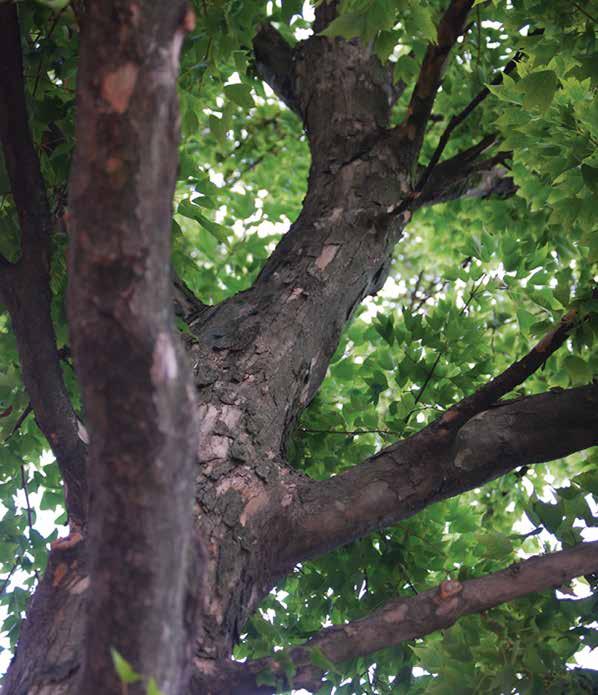
small ribbed or winged nutlets. The plants can be used as a low maintenance understory plant, allowed to naturalize in a wooded area or as a small lawn specimen. There are few insect and disease pests, but the American Hornbeam can still be susceptible to cankers, leaf spots and twig blight, while the two-lined chestnut bore and maple scale can be problematic.
Quercus laurifolia or the Laurel Oak is a native Champion, a mostly deciduous, medium sized tree growing 40-60 feet tall that is in the Red Oak family. The Champion tree is also located on the University of Maryland campus by the Benjamin building. They are cold hardy in USDA zones 7-9 and thrive in full sun in rich, acidic, wet but well drained soils. Once established they can grow in poorly drained soils and drought soils. The semi-evergreen leaves are oblong and narrow, dark green and glossy. They grow in an alternate pattern on the grey brown stems, growing 1-4 inches long. In the warmer climates, the leaves don’t fall until mid-winter, but in the northern areas the leaves fall from the trees in autumn. After 15 years, the trees begin to produce edible acorns that are an important food source for native wildlife. The silhouette is a broad rounded crown and the medium size of the trees make them an excellent choice for residential landscapes. The National Champion measures 86 feet tall and 89 feet wide in Chesapeake, Virginia. Although Oaks are susceptible to many diseases, the Laurel Oak is considered to have good pest resistance and be a low maintence tree. Insect pests can include borers, caterpillars, galls, leaf miners, oak lace bugs,
nut weevils, oak skeletonizer and scale. Disease pests can include anthracnose, cankers, chestnut blight, leaf spots, oak leaf blister, oak wilt, powdery mildew and shoestring root rot. There was a beautiful Champion Quercus stellate or Post Oak located on the UMD campus on the north side of the Architecture building, but it succumbed to the sands of time this past year.
Ulmus alata or Winged Elm is also a native Champion on the UMD campus, located north of Dorchester Hall. Winged Elms are cold tolerant from USDA zones 6-9 and grow best in full sun with rich, moist loam soils. Once established they are tolerant of both dry and moist but well drained sites. The plants have an open rounded crown and resemble the silhouette of the American Elm but have a finer, more graceful habit. Young trees may need to be pruned to maintain the single trunk. Most Winged Elm are considered a medium to small sized tree, growing 30-50 feet tall and 25-40 feet wide. In late winter, the Elm blooms with clusters of small red-green flowers that mature into oval wafer like samaras that are outlined by long white hairs on the edges. Each samara has a single seed that is wrapped in a flattened papery container, and matures in the spring, cascading to the ground like green confetti. The almost leathery dark green leaves are alternately arranged on the slim gray-brown stems that grow 2 corky wings opposite each other. Each leave is 1 ½ to 2 ½ inches long with double toothed serrated edges with asymmetrical bases. In autumn the green leaves fade to yellow. The National Champion is located in Hopewell, Virginia and is 95 feet tall with a spread of 83 feet. Elms have many disease pests including the fatal fungal Dutch elm disease that is spread by bark beetles and attacks the xylem, which conducts water and nutrients up through the tree. Powdery mildew can turn some of the leaves white by autumn, and a fatal Phloem necrosis, caused by a phytoplasma. Other disease include a bacterial disease, Wetwood, other wilts, rots, cankers and leaf spots. Insect pests can include beetles, borers, caterpillars, mealy bugs and scale. The tree is not usually available due to its many disease issues.
Abies firma or Momi Fir is a fragrant needled evergreen tree from Japan and the Champion tree can be found on UMD in the Physics courtyard. The Momi Fir is cold tolerant in USDA zones 6-9, thriving in full sun to part shade and rich, slightly acidic, moist but well drained soils. Despite the fact that most species of fir prefer cool and moist landscapes, Momi Fir handles both the heat and the humidity of much of Maryland. The 1 – 1 ½ inch dark green needles are arranged like a 2 sided comb with the broadest needles in the center and forming a wide V shape. Young plants have 2 sharp prickles at the top of each needle while older trees have thicker needles. The needles are dark green on top and lighter green on the

underside along with 2 gray green bands. The gray bark is scaly and fissured, becoming corky as it matures. Plants can reach 40-60 feet tall, spreading 30-50 wide, growing in a pyramidal fashion with young trees growing branches that reach upwards and older trees have more horizontal branches as they age. Momi Firs flower in early spring, maturing into upright 3 ½ to 5 inch yellow brown showy cones. Once the seeds in the cones have ripened, the cones begin to drop their scales, leaving the center spike on the tree. Momi is Japanese for Fir and firma is Latin for firm for the firm needles. There are no National Champion Abies firma found in the National Register of Champion Trees. There are a few insect pests including aphids, bagworms, bark beetles, spider mites and spruce budworm, but the balsam wooly adelgid is not a pest. Potential diseases can include cankers, heart rot, needle rust, root rot and twig blight. The fragrant dark green needles and graceful branches can make the Abies firma a wonderful specimen or planted as a screen. Acer buergerianum or the Trident Maple is originally from China, Korea and Japan. The Champion tree on the campus of University of Maryland is located near the Union Lane Parking Garage. Plants are cold tolerant from USDA zones 5-9, thriving in full sun and moist, well-drained acidic soils, and once established can be drought tolerant. Trident Maples flower in the early spring, maturing into samara with wings 1 inch long and ½ inch wide. The lustrous dark green leaves have 3 trianglar lobes with medium cut sinuses, and are arranged on opposite sides of the gray-brown slender stems. New leaves emerge with a green-purple or bronze color, maturing to dark green for the summer. In the autumn, the leaves can change to yellow, orange and red. On older trees, the bark begins to exfoliate, creating lighter and darker patches that provide winter interest. The silhouette of the Trident Maple multi-stemmed with a rounded habit. These small to medium trees can grow 20-30 feet tall and wide, making them an excellent candidate for smaller landscapes. There were no serious insect or disease pests listed, and no National Champion printed in the National Register of Champion Trees.
Aesculus x carnea or the Red Horsechestnut is the result of a chance cross between Aesculus hippocastanum and Aesculus pavia, Red Buckeye in Europe in 1812. The results created a deciduous tree that bloomed with beautiful rose red flowers on a panicle 3-4 inches wide and 6-8 inches tall. The flowers are doubles with double the chromosomes, creating even larger more lovely blooms. After flowering the seed capsules emerge and have a slightly prickly exterior. The nuts in the pods are poisonous as are the fruit of A. pavia. The Red Horsechestnut Champion can be found on in the Arboretum near the Benjamin Building. Plants are cold hardy in USDA zones 5-8, thriving in full sun to partial shade and fertile,

moist soils. A strong taproot forms as the plants become established, making them difficult to move. The palmately compound dark green leaves are created with 5-7 doubletoothed margined leaflets. There is little to no change of color when the temperatures drop in the autumn. Plants can grow 30-40 feet tall with a rounded silhouette. There are no National Champion Aesculus x carnea found in the National Register of Champion Trees. Although this hybrid has better disease resistance it can still have leaf blotch, leaf scorch, Powdery Mildew and leaf spots may occur. Insect pests can include bagworms, borers and Japanese beetles. Aesculus x carnea can be grown as a beautiful shade or specimen in a park or in a large yard, but due to its dropping of nuts, twigs and leaves, it is not considered a good street tree. Firmiana simplex or Chinese Parasol tree is a very fast growing small to medium sized deciduous tree, originally from China and Japan. The Champion tree on UMD is locate by the Memorial Chapel. Cold hardy in USDA zones 7-9 and thrives in full sun or partial shade and well-drained soils. Early spring brings the pale yellow leaves that quickly develop into a rich green color with 3-5 lobed leaves that are almost tropically large, growing 8-12 inches across and long which helps the tree to cast very dense shade – like a parasol. The palmately veined bright green leaves attach alternately to the smooth gray green stems. In the autumn the leaves change to butter yellow before leaving the trees. The silhouette of the tree is rounded as it reaches heights of 35-50 feet tall and 15-20 feet wide. In summer, the upright 10-20 inch long panicles hold
(continued on next page) Chinese parasoltree
creamy yellow green, lightly fragrant flowers which mature quickly into showy pointed bean shaped seed pods. Pods split open into 4 petal like sections with the pea sized seeds at the edges, and can be harvested for decorations. Trees are selffertile which allows it to reseed easily, and is considered an invasive in many southern states and is not available for sale. Although there are no National Champions listed in the 2021 National Register of Champion Trees, Dr. Dirr listed one that grew 47 feet tall, 36 feet wide in San Diego County, California in his 6th edition of Manual of Woody Landscape Plants. There are only a few pests listed like bark scale, but the structure of the wood is weak and can cause breakage in strong winds and winter snow or ice.
Koelreuteria paniculata or the Goldenrain Tree has other common names including Varnish Tree or the Pride of India and is from China, Japan and Korea. The Champion on the UMD campus is located near Benjamin Hall. It is cold hardy in zones 5-8, thrives in full sun and although it can tolerate a wide range of soil types, it does prefer moist, well drained neutral soils. The Goldenrain tree is also heat, drought, wind and air pollution tolerant, making it a positive choice for many towns and cities. Early spring the alternately placed hairy buds open to feathery pinkish bronze pinnate or bipinnate compound leaves that reach 18 inches long. They mature into a rich green color with each leaf composed of 7-17 irregularly and coarsely lobed leaflets. In the autumn, the leaves can turn bright to
pale yellow, leaving the raised shield shaped leaf scars on the olive to light brown stems. Twigs have brown-orange lenticles. The silhouette of the Goldenrain Tree is irregularly shaped, open branched with a round crown on a small to medium size tree growing 30-40 feet wide and tall. The branches grow medium to fast to spread wide and lift upwards. Even young trees can produce bright yellow star shaped flowers in the early summer that are ½ inches wide, stacked loosely on a 12-15 inch long and wide panicle. As they mature and fall to the ground they resemble a golden rain puddle carpeting the area under the trees. The flowers mature into papery 3- valve capsules that change from green to yellow and finally brown, resembling dangling Chinese lanterns. There are no National Champion Koelreuteria paniculata found in the National Register of Champion Trees. The plants have no serious diseases or insects, but canker, coral-spot fungus, leaf spot, root rot, wilt and nematodes have been reported. Plants can easily reseed which could be invasive. There are a number of cultivars including ‘Beachmaster’ a more compact tree whose seeds were collected along the seashore, and ‘September’, that flowers late summer.
Phellodendron amurense or Amur Cork Tree is a medium sized tree from northern China, Manchuria and Japan. The UMD Champion tree is located by the Grounds Compound. It is cold hardy in USDA zones 3-7 and thrives in full sun to shade and prefers moist well-drained soils but is adaptable to many soils, many pH’s and slightly tolerant of urban air pollution. The Amur Cork Tree leaves are arragned opposite on the stout yellow gray stems with that mature to brown and prominent lenticels. The leaf scars are a raised ‘U’ shaped. The leaves are pinnately compound growing 10-15 inches long. There are usually 5-11 leaflets which are 2 ½ to 4 ½ inches long and half as wide, narrow at the base and the tip, rounded in the center. The top of the leaves are dark lustrous green and smooth on the underside. In the autumn, the leaves turn a bronze yellow before abscising. Trees usually grow 30-45 feet tall and wide with a broad spreading rounded crown over large almost horizontal branches. When the tree grows very old the bark becomes ridged and furrowed into a cork like pattern, giving the tree is name. The flowers are dioecious like Holly tree, with male flowers on one tree and female flowers on the other. This is important because the plants are allelopathic, which means that they put out a chemical that alters the soil microorganisms and suppresses the growth of other plants including decreasing the production of native oak and hickory nut production. Female trees can produce thousands of seeds from the small yellow green flowers that grow in large clusters of terminal panicles. The flowers mature into small fruit that starts out yellow green in color and gradually turns oily and aromatic as it turns black. The fruit stays on the panicles after the leaves fall off and have 2-3 viable seeds. In the
nurseries, only the male plants are sold. There are no National Champion Phellodendron amurense found in the National Register of Champion Trees. There are no insect or disease pests listed. There are a few all male cultivars listed including Eye Stopper™ which has very yellow fall foliage and His Majesty™ which grows into a broad vase shape with improved branching and lovely yellow fall foliage. Shademaster® is a strong grower with improved branching and shiny dark green foliage, and Superfection™ that has an upright pyramidal habit and leathery dark green leaves.
Pinus wallichiana or the Himalayan White Pine is a medium to tall evergreen conifer from the Himalaya foothills. The UMD Champion tree is found by the Memorial Chapel. Plants are cold hardy in USDA zones 5-7 and thrives in full sun in moist, well-drained acidic sandy loam soils, growing 30-50 feet tall. The gray-green to blue-green needles are arranged in bundles of 5 can grow up to 8 inches long. The bundles are held upright on the younger trees and branches but droop as they mature, giving the tree a feathery appearance. Needles stay on the trees for 3-4 years before being shaded out. The silhouette is loose but broadly pyramidal with horizontal lower branching and slightly upwardly curved upper branching. As the plants mature, they begin to broaden into a rounded crown. Single slender cones grow 6-10 inches long on 1-2 inch stalks, upright when young and drooping slightly as they mature the second year to a light brown. The gray bark turns dark brown as it ages and grows strong fissures. Pests can include canker, Diplodia tip blight, needle cast and pine wilt nematodes. There are no National Champion Pinus wallichiana found in the National Register of Champion Trees. The Himalayan pine is a lovely graceful ornamental pine that looks a bit like our Eastern White Pine, and will look excellent in parks and large properties. Syringe reticulate or the Japanese Tree Lilac is from northern Japan and is considered a large shrub or a small tree, growing 20-30 feet tall and 15-25 feet wide. The Champion Syringa reticulate can be found beside Symons Hall on the UMD campus. It is cold hardy in the USDA zones 3-7, thrives in full sun, and prefers moist, well-drained slightly acidic soils. The shiny dark green leaves are gray-green on the underside, growing 2-6 inches long. They are attached opposite each other on the shiny brown stems that have a large number of lenticels. There is not fall color, but the plants growing in full sun have less powdery mildew on the leaves. The silhouette of the Japanese Tree Lilac is oval to rounded, and with age the branches begin to arch creating a more graceful look. The beautiful creamy white clusters of flowers have a fragrance similar to privet and decorate the landscape for up to 2 weeks. The flowers attract hummingbirds, bees and many butterflies including the Purple Admiral, White Admiral and Canadian Tiger Swallowtail. There are no National Champion Syringe
reticulate found in the National Register of Champion Trees. Lilac borer, scale and Powdery Mildew are the major pests. The Japanese Tree Lilac makes a wonderful specimen and a street tree, adding color to the landscape.

Taxus baccata – English Yew is a large shrub or a small evergreen tree, originally from Europe. The Champion Taxus baccata can be found beside Reckord Armory on the UMD campus. The plants are cold hardy in USDA zones 5-7, and thrive in both full sun and shade, preferring moist, well-drained sandy loam soils and is not fussy about the pH. The leaves are the darkest of green on top and yellow-green below. They are arranged in a spiral fashion around the upright shoots. Leaves are ½ to 1 ¼ inches long and 1/16 to ¼ inches wide, convex with recurved margins and a strong midrib, tapering top a sharp point at the top. The stems are surrounded at the base by brown-green scales. Plants can grow 30-60 feet tall and 15 by 25 feet wide and their silhouette can be wide spreading with a rounded crown or shrubby. Older trees develop thick trunks with reddish-brown scaly bark. Plants are dioecious, with both male plants and female plants. The females produce beautiful berry like fruit with a single seed surround by fleshy red material. The males cones are rounded and emerge from the axils of the leaves on the underside of the previous year’s growth with each cone containing 6 – 12 stamens. There are no National Champion Taxus baccata found in the National Register of Champion Trees. All parts of the English Yew are poisonous if eaten, but birds can feed on the berries without
Get Active. Stay Involved.
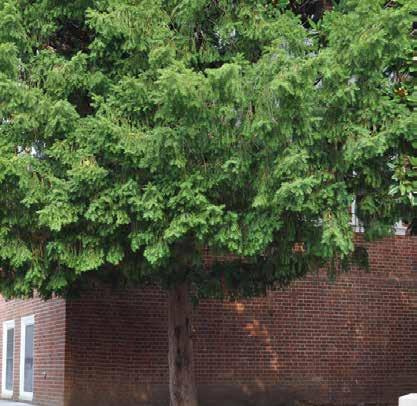
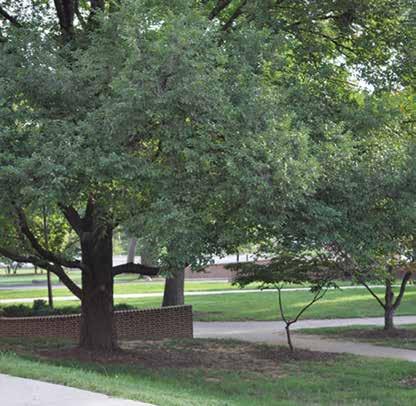
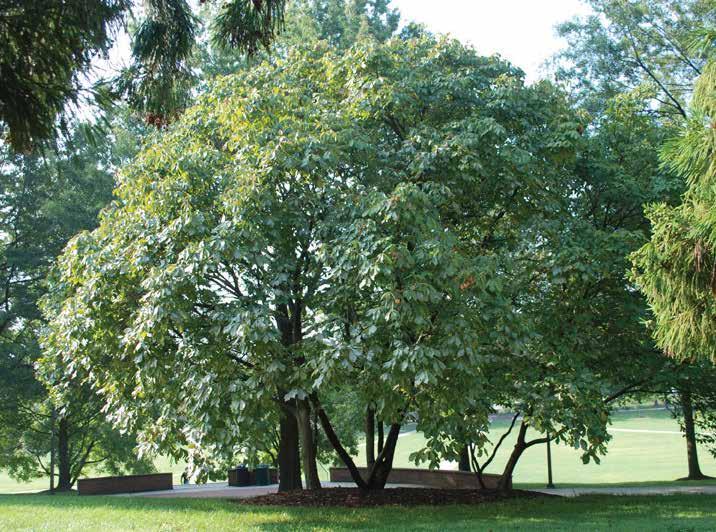
any damage. Insect pests include mealybugs, scale and vine weevils and disease pests include needle blights, root rot (in heavy soils) and twig blights. The English Yew is a wonderful dark evergreen, suitable for screens and hedges, also handles pruning very well and is an excellent candidate for topiary.
Ulmus parvifolia – Lacebark Elm or Chinese Elm is a deciduous tree that is from China, Korea and Japan. The Champion Ulmus parvifolia can be found beside the Severn building on the UMD campus. The Lacebark Elm is cold hardy in USDA zones 4-9 and thrives in full sun or light shade and prefers rich, moist well-drained loams. Once established the Lacebark Elm is tolerant of both wet and dry sites, urban pollution and slightly salt tolerant. The trees are considered medium to large trees, growing 40-50 feet tall and wide with a rounded crown and long arching branches. The leaves are arranged alternately on stems that grow towards each leaf, creating a zigzag pattern. Dark green serrated leaves are ¾ to 2 ½ inches long and 1/3 to 1 1/3 wide with an unequal base and a sharp tip. The underside is lightly furred when the leaves are young and almost leathery when they mature and the veins are parallel to the mid-rib. In the autumn the leaves can change to yellow or reddish purple. The tiny reddish green flowers of the Lacebark Elm bloom late in the summer into fall, and are hidden by the lush foliage. The flowers mature into light brown seeds that are individually wrapped into papery winged samara that is viable in the late fall. The beautiful exfoliating bark is this plants trademark with bark flaking off to reveal vaiable patches of brown, cinnamon, cream, gray, green, olive and orange. There are no National Champion Ulmus parvifolia found in the National Register of Champion Trees. There are a large number of cultivars that provide beautiful bark, lovely leaves and silhouettes. Allée is just one of many that are beautiful trees with dark green leaves, beautiful branching and excellent resistance to Dutch Elm Disease and the Elm leaf beetle. Some have red or other fall colors, some have variegated white and green foliage, some have weeping branches, some are fastigiated or very columnar and some are very small. Pests include an occasional problem with cankers, leaf spots, phloem necrosis, root rots and wilts. What they do have is strong resistance to Dutch Elms disease, Japanese Beetles, Elm Beetles and leaf scorch. Because of the number of seeds the plants can make each year, it is not appropriate to plant the Lacebark Elm in natural areas due to the potential of the seedling becoming invasive. It could make an interesting shade tree in urban settings.
Ulmus pumila – Siberian Elm is a large deciduous tree 50-70 feet tall and 40-50 feet wide with a vase shaped rounded crown. The Champion Ulmus pumila can be found by the South Gate entrance into the UMD campus. The Siberian Elm is cold hardy in USDA zones 4-9, and thrives in full sun to
part shade and once established is very drought tolerant. It was originally brought to the states for it resistance to Dutch Elms Disease, it fast growth potential and its ability to grow in poor soils. The upper side of the nearly double serrated leaves are dark green while the underside are lighter and slightly fuzzy. Unlike many Elms, the Siberian Elm has an almost even symmetry with the lower half of their leaves on either side of the midrib. Early spring before the leaves emerge the green and red flower bloom and mature into rounded winged samaras with one seed in each samara. Summer brings the bright green leaves and autumn showcases the shiny red tipped black buds for the next spring. The fast and brittle growth became more of a problem when the strong winds, and winters ice and snow cause large branches fall. There were 2 co-national champions when Dr. Dirr wrote the 6th edition of the Manual of Woody Landscape Plants, one that was 86 x 128 feet in Londonderry, OK and the other 85 x 99 feet in Grand Junction, CO. There are no National Champion Ulmus pumila found in the National Register of Champion Trees. Besides the brittle nature of the branches, the Siberian Elm is well known for the leaves being devoured by the elm leaf beetles, leaving the tree with brown-laced leaves by the beginning of September. Other pests include borers, caterpillars, mealy bugs, sawflies and scale. Diseases include Dutch elm disease and phloem necrosis, cankers, rots and various wilts. The Siberian Elm creates large numbers of seeds each year and the tree is listed as an invasive in many states including Maryland.
Whether a tree is a native or a non-native, they give back so much to the environment and are especially important with the climate changes that are occurring so quickly. Trees take in carbon dioxide, release oxygen, and filter out many air pollutants. They provide cooling shade locally and store carbon dioxide to help cool the earth. They help hold the soil in place and filter pollutants in the water, reducing both excessive nutrients and pollutants from entering into our streams, lakes and bays. Trees are also a wonderful source of food and shelter for many of our native birds and animals. Trees are also found to be important for human health, reducing violence in troubled neighborhoods and providing calming and healing environments. There are so many good reasons to plant a tree, you just need to find the right tree for the right space! A
Ginny Rosenkranz

Extension Educator, Commercial Horticulture, University of Maryland Extension, Dorchester, Sommerset, Wicomico and Worchester County 410 749-6141 x106 rosnkrnz@umd.edu
Get Active. Stay Involved. •
Providing either “do-ityourself” or professional landscape installation and maintenance advice.
For more information contact the Maryland Nursery, Landscape and Greenhouse Association 410-823-8684 or visit mnlga.org

You only grow the best.
Why not offer your customers the best in advice, too!
The MNGLA has created a Social Media Toolkit to help our members utilize their social media resources to reach retail/homeowner customers, educate them on the benefits of plants/landscaping, and to build sales. The toolkit, which is housed in Dropbox, contains all the basics for creating social media posts as well as suggested content, graphics, and a calendar of events to help get you started. Just log in to the MNLGA website, you’ll find the toolkit right on the Member Landing Page. Please email office@mnlga.org if you have any questions regarding logging in to your member account.
Free State News is seen by members of Maryland’s Nursery, Landscaping, Greenhouse, Garden Center and Allied Industries and is the leading publication for members of the MNLGA
Free State News enhances your ad with important industry specific content that is educational and informative. And, the digital version gives readers direct access to your website
Free State News helps promote your company and product while providing direct access to readers in Maryland’s Green Industries
Articles are contributed by highly regarded members of the industry, many of whom have a lifetime of knowledge and are frequently published
Free State News is a cost-effective way to help keep your name out in front of the membership and your potential customers
Free State News helps support the association in its endeavors on behalf of the green industry in the state of Maryland
For more information on advertising in the Free State News contact Kelly at 410-823-8684 or e-mail kelly@mnlga.org
The purpose of the Maryland Nursery, Landscape and Greenhouse Association is to promote the use of ornamental plants, products, and services. The association supports all constituent groups of the horticulture industry including landscape, garden centers, interiorscape, grounds maintenance, nursery, greenhouse, and arboriculture. The association communicates the role of the horticulture industry in improving people’s quality of life.
Promote professionalism through education programs for members and the public and by encouraging enrollment in educational institutions.
Monitor state and local laws relating to horticulture industry.
Participate actively in legislative and regulatory processes. Promote the use of environmentally sound practices in the horticulture industry.
Monitor and communicate to members developments in allied industries including agritechnology.
Support donations of plant products and services to state and community programs. Support research relevant to the horticulture industry.
Participate in Maryland agricultural organizations.

Ronda Roemmelt – Chair
Angela Burke
Dave Clement
Steve Dubik Hank Doong
Stanton Gill
Laura Hangmann
Brett Karp Cindy King
Brian Mitchell
John Murphy
Karen Rane Andrew Ristvey
Ginny Rosenkranz
Chuck Schuster
Heather Zindash
Nominating
Mark Dougherty – Chair
Richard J. Watson
Finance and Planning
Carrie Engel – Chair
Cindy King John Murphy
Leslie Hunter Cario
Link/Shanks Scholarship Mark Dougherty – Chair
MANTS
Jan S. Carter
Bernard E Kohl, Jr. Jessica Todd
Membership Committee
Rich Poulin
Martha Pindale
Awards - Professional Achievement, Carville M. Akehurst
Michael Marshall – Co-Chair Kevin Clark – Co-Chair
Legislative/MaGIC
James R. McWilliams – Chair
Mark Schlossberg
All Officers and Directors
Alan Jones
Bernie Kohl
CPH
George Mayo - Chair Steve Bell
Steve Black
Steve Dubik Cindy King Betty Marose Andrew Ristvey Ginny Rosenkranz
Martha Simon-Pindale Bob Trumbule Jaime Tsambikos Jon Vander Vleit Gaye Williams Scholarship
Bernie Kohl, Jr. – Chair Hank Doong Jessica Todd George Mayo Leslie Hunter Cario Mary Claire Walker Historian George Mayo – Chair
Dr. John Lea-Cox
University of Maryland
Kimberly Rice MD Department of Agriculture
Invasive Plant Advisory Committee
Brent Cassell
Larry Hemming
Leslie Hunter Cario
LEAD Maryland Vanessa Finney
Maryland Agriculture Commission
Ray Greenstreet John Murphy
Maryland Agriculture Council Vanessa Finney
Maryland Farm Bureau
Larry Hemming Kevin Clark Vanessa Finney MAEF
George Mayo Maryland Invasive Species Council (MISC) Alex Betz Brian Mitchell University of Maryland – Dean’s Global Leadership Council Vanessa Finney
Young Farmers Advisory Council Colin Jones
Maryland Nursery, Landscape and Greenhouse Association
Board of Directors
Terms Expiring January 2023
Katie Watson Shaltry
The Perennial Farm 410-592-6106
John Hyman
Rolling Acres Landscape Co. 301-421-9600
Alex Betz Kurt Bluemel, Inc. 410-557-7229
Brian Mitchell Manor View Farm 410-771-4700
Terms Expiring January 2024
Renee Quillin
Planted Earth Landscaping 410-857-4744
Martha Pindale American Landscape Institute 410-688-5115
Bryan Schlosser Roseland Nurseries 410-755-6500
Jon Van der Vliet Lawn Wrangler 410-975-5125
MNLGA Contact Info: P.O. Box 726
Brooklandville, Maryland 21022
Phone: 410-823-8684 Fax: 410-296-8288
Every member of every committee listed above is an individual who volunteers their time in support for the MNLGA and it is with the utmost gratitude and appreciation that we thank you for your selfless endeavors.
If your name is not listed above, please consider following the example of those who are. Contact Vanessa at 410-823-8684 with your interest.
E-mail: office@mnlga.org
Free State E-mail: freestate@mnlga.org Website: mnlga.org
